Huw Morgan | 28 February 2020
When we last saw each other in October Flora and I had planned on her returning to Hillside in the very depths of winter to see what she could create with the skeletons of last year’s growth when there was hardly a flower to be seen in the garden. We pencilled in a late January date in the diary. However, I was taken ill after Christmas and was out of action until early February. This meant that the next available date for us to meet was at the end of last week, when the season was definitely starting to tip into spring.
Flora arrived on Thursday evening with her good friend Paul, who gardens with her at Westhill Farm. He has assisted Flora on the last two shoots here, cutting and conditioning flowers, organising and filling containers and clearing up afterwards, not to mention the laughter and banter. We could not have done any of them without his help. We were all up early on Friday morning, wary of the weather forecast with its warnings of another approaching storm. I had gathered some woody material – hazel, willow and cherry plum – from the hedgerows, woods and garden the previous day, and there was a wide selection of dead material in the tractor barn that I had saved from the garden before Christmas. After breakfast Flora and Paul took a tour of the garden to select the things that took their fancy to bring colour and a feeling of hope to the arrangement.
With storm clouds gathering and wind gusting erratically, and despite the fact that we had decided to make the arrangement under cover, the weather conditions were challenging. On more than one occasion the entire, and nearly completed, arrangement almost blew over. Fortunately Paul was quick off the mark and managed to catch it, preventing it from needing to be entirely remade. Just moments after I had taken the last shot of the finished arrangement a great easterly gust blew into the barn and sent everything flying. We all laughed and understood that the shoot was well and truly over.
Although it was testing working and photographing in these conditions it felt like a very authentic engagement with and recording of the reality of the season.
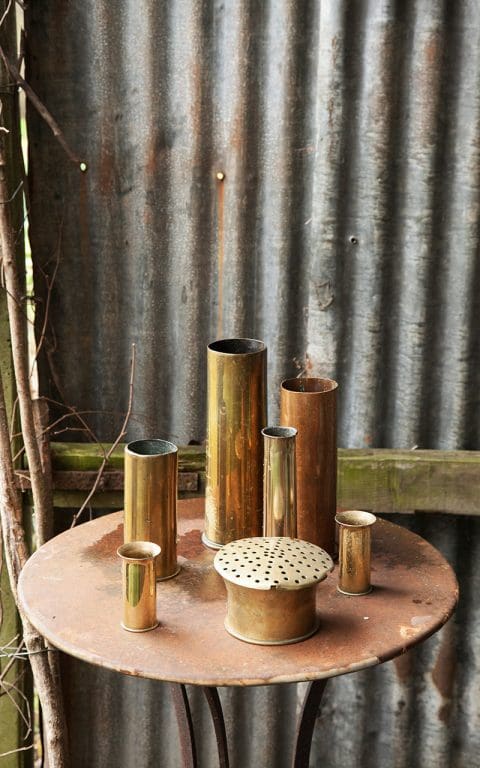
Flora Starkey | 28 February 2020
It is winter at Hillside and there’s a new quieter beauty in the garden. Again, I’m happy to be here on the cusp of the season as spring starts to show beneath the fallen grasses and branches that are bare of leaves.
The rains held off for a few hours on Friday morning, but the winds still blew. Huw and I decided it would be impossible to try and continue our series in front of our usual rusted barn background so we moved behind and into the inside corner of the barn. We both liked the light there and hoped we’d be more sheltered from the elements, but there were still times the wind caught us from the side – all adding to the fun.
I’d used ceramic and glass vessels in the summer and autumn arrangements and so this time I was drawn to the idea of metal. Specifically vases made from old mortar shell casings. I brought a small collection with me, including a bowl with a drilled lid gifted to me by my friend Paul. A remnant of World War 1 and life in the trenches. I like the idea of using flowers to reflect, remember and bring beauty from the darkness. I guess it seemed especially fitting for the season with the violets and primroses showing up and braving the end of winter.
Despite the fact that much of the garden was dormant, Huw cut some beautiful single flowering Prunus from the border hedgerows. These, along with hanging hazel lambs’ tails and a few varieties of silvery, soft catkins formed the base of the shape. I especially loved the snowy delicacy of the Salix purpurea ‘Nancy Saunders’.
Some tall but delicate stems of rosemary and a twist of honeysuckle coming into leaf added some essential green. These were followed pretty quickly by a frame of dried beauties that Huw had saved for me last autumn – some wonderful silver stars of aster and rusty licorice seedheads. It has been interesting for me to recognise how important the dried elements from the season before have felt every time I’ve come here.
With the taller elements in place, I moved to the flowers below the canopy – a single snip from several varieties of hellebore including a double black that I was particularly taken with. With the winds picking up again, it was time to focus on my favourite low lidded vase at the front. This held a tiny carpet of primroses, snowdrops, Cyclamen coum and a violet complete with leaves.
I had wondered how much of a challenge our winter arrangement would be. It might be that it’s my favourite yet.
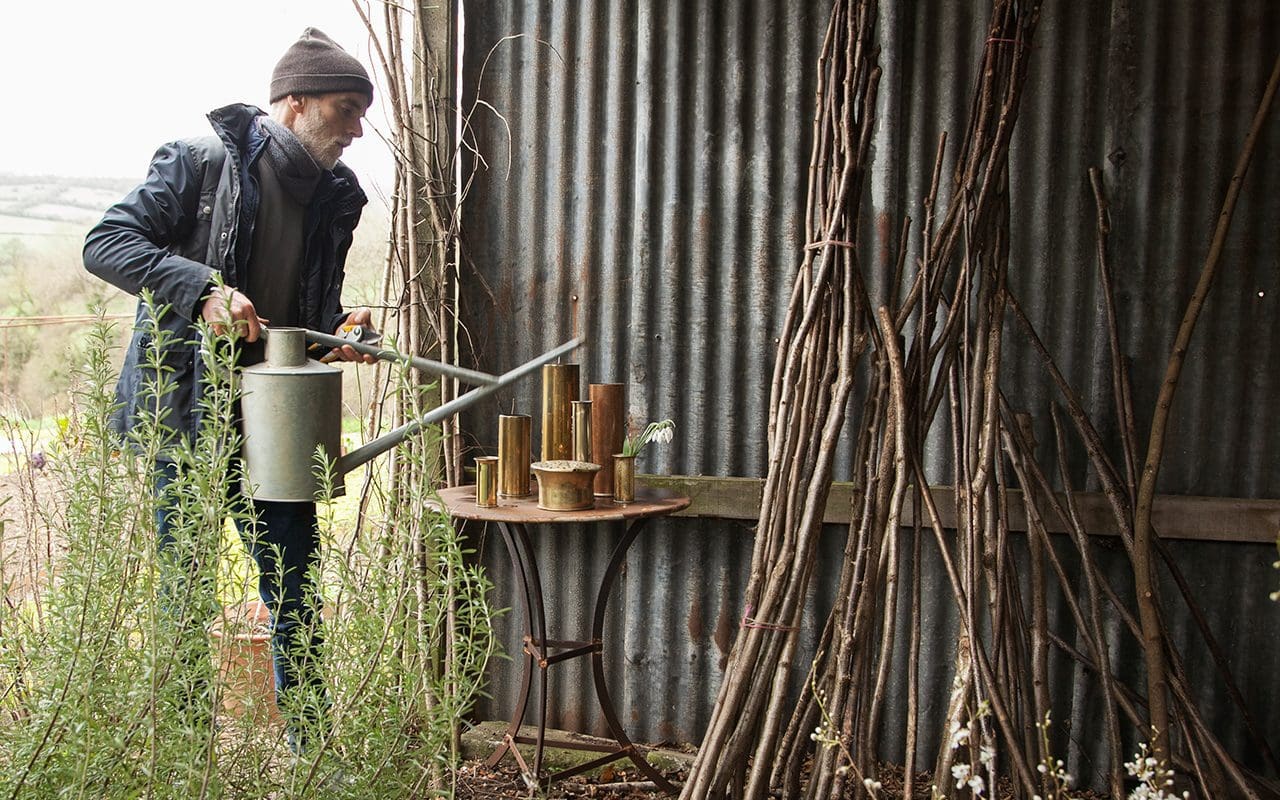
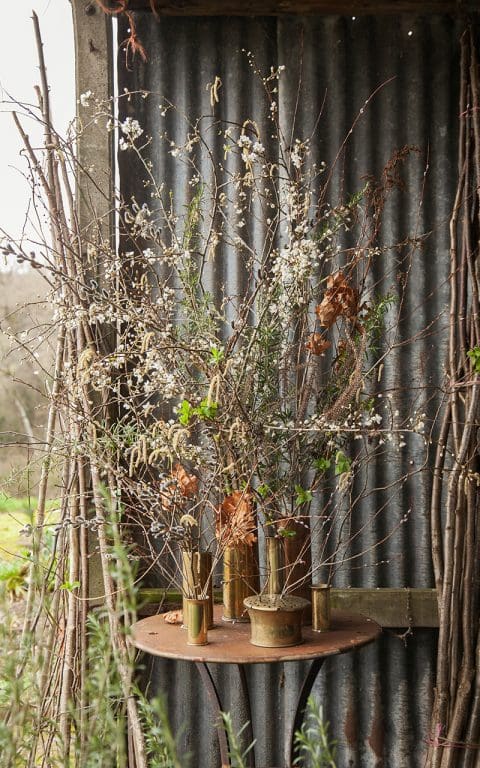
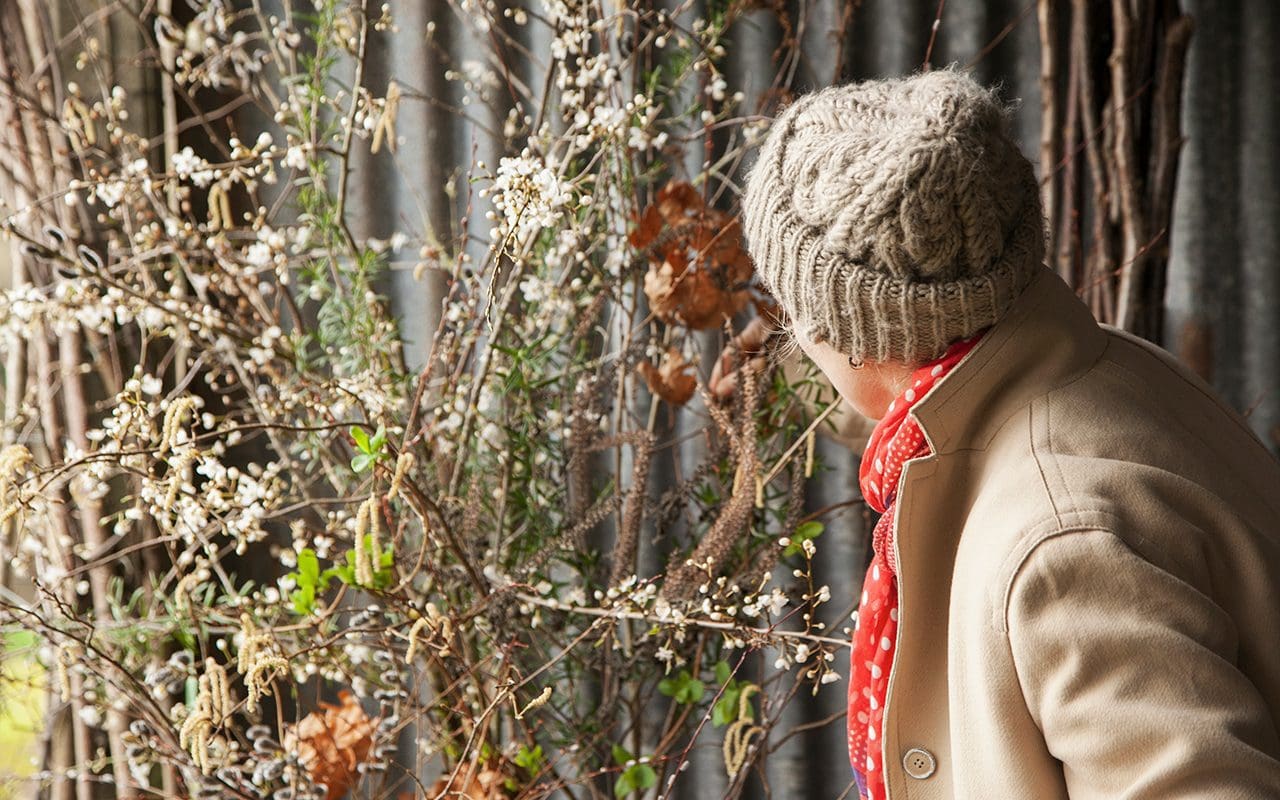

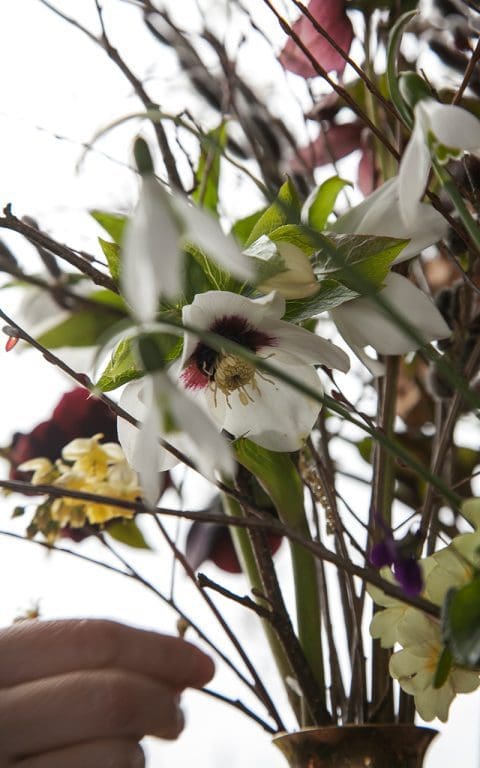
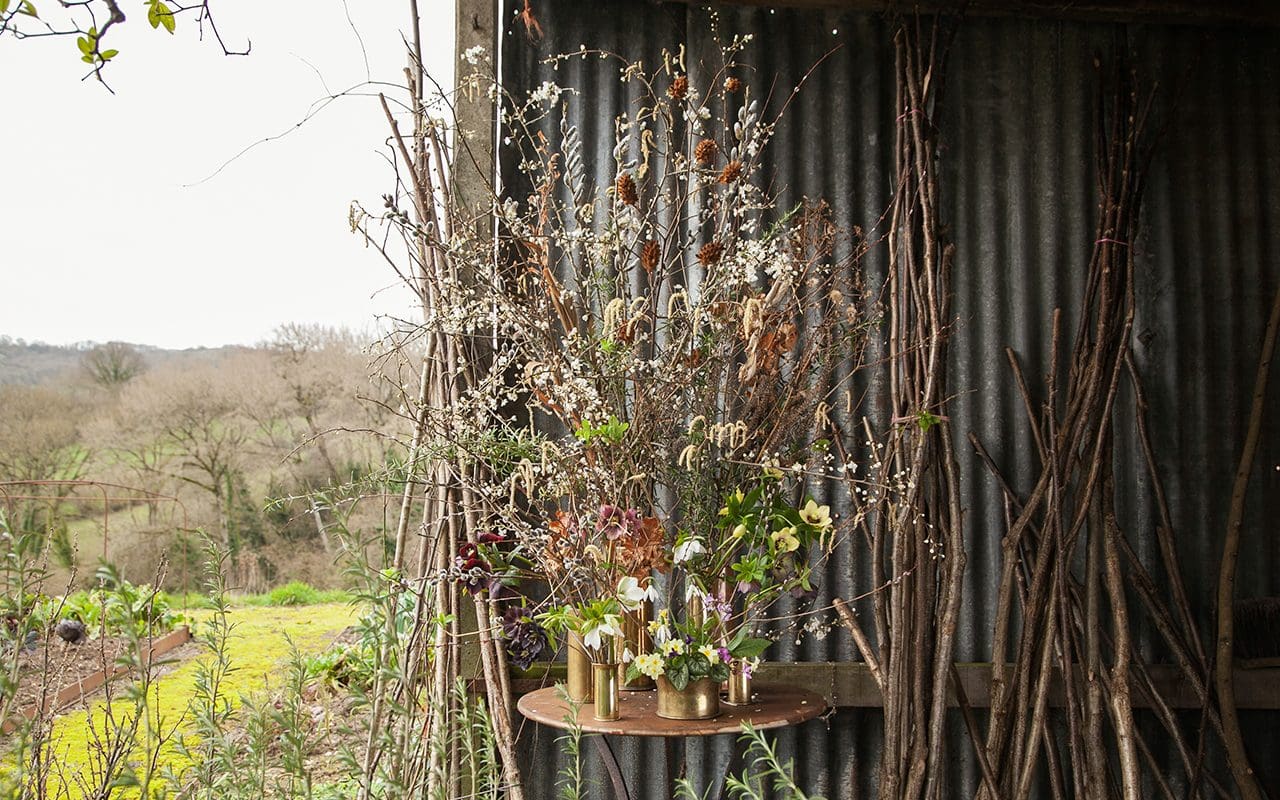
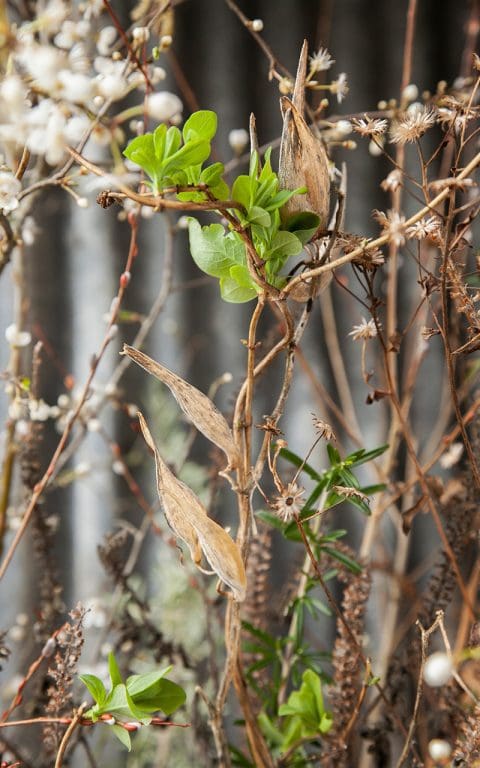
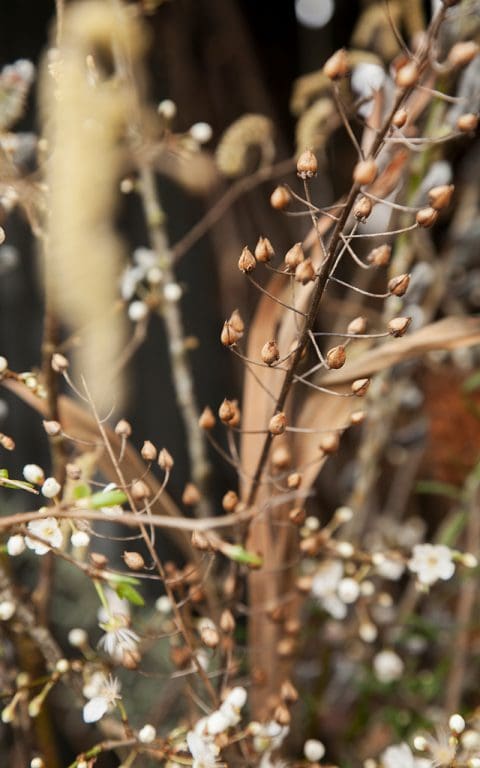
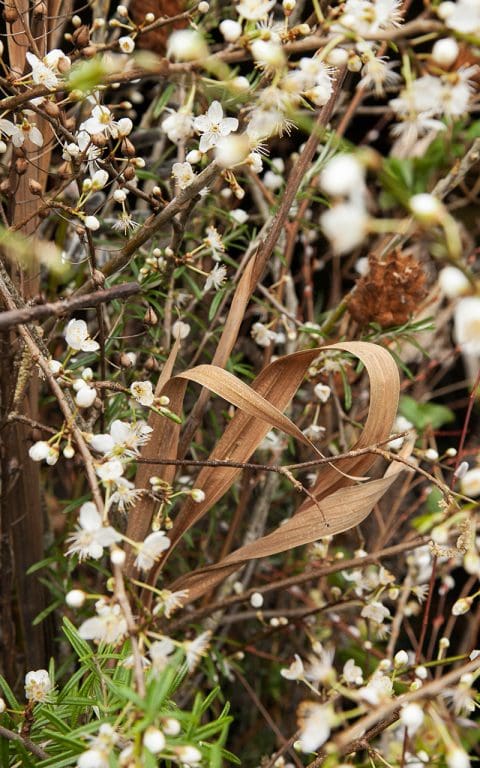
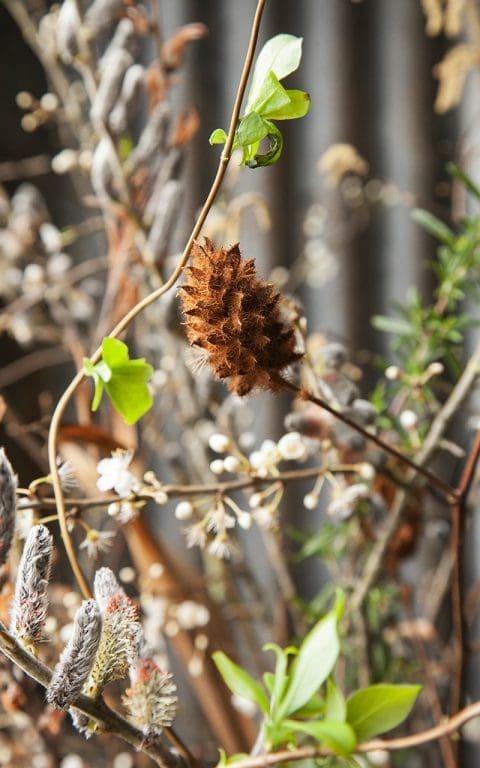
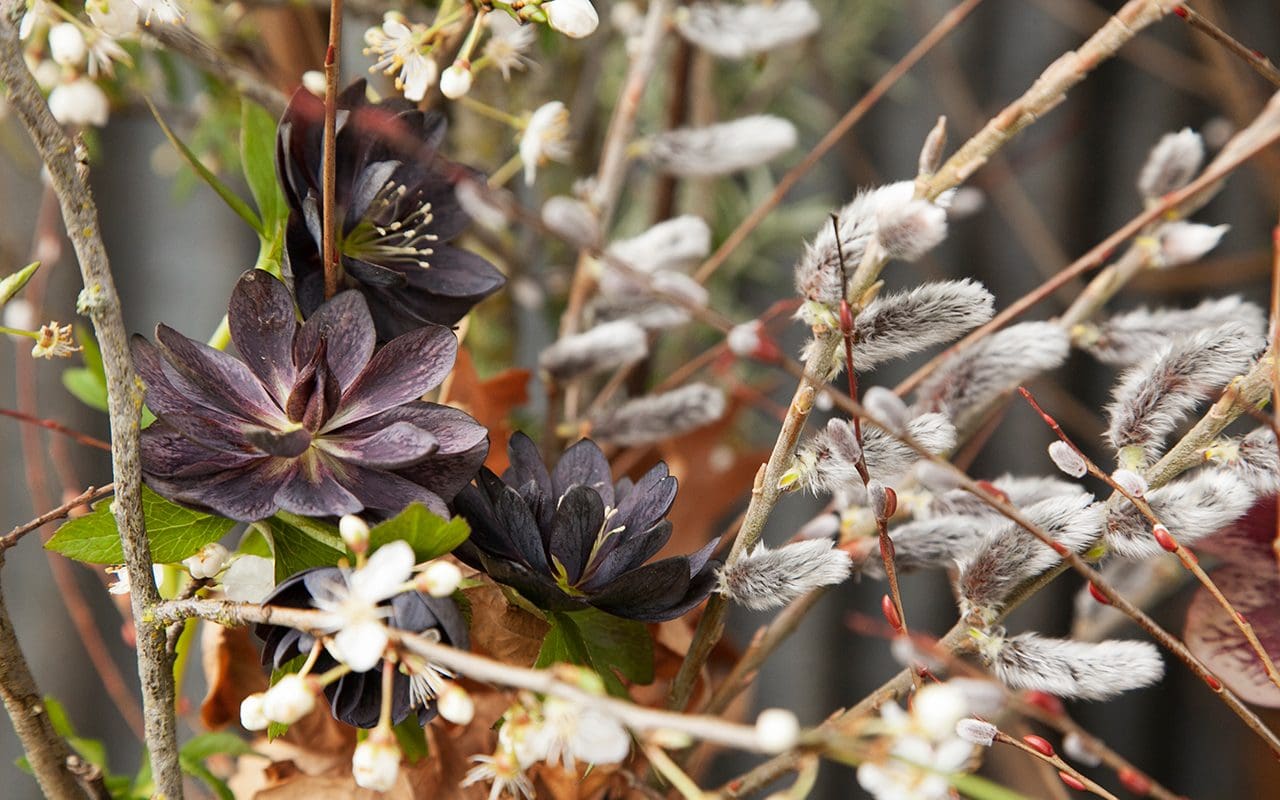
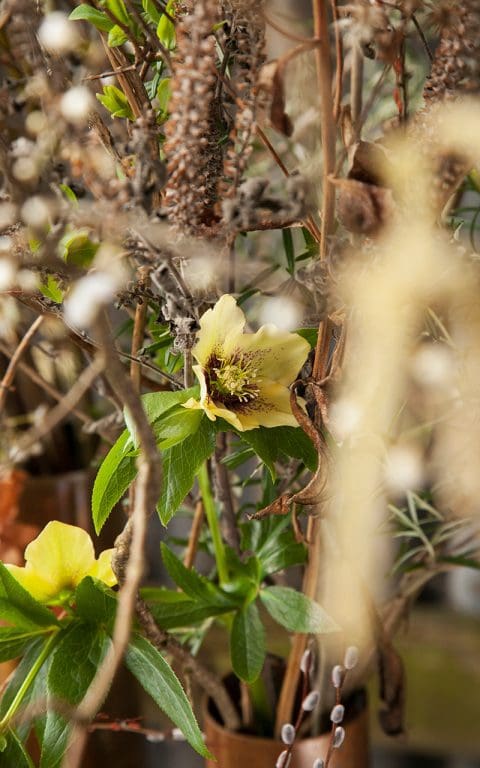
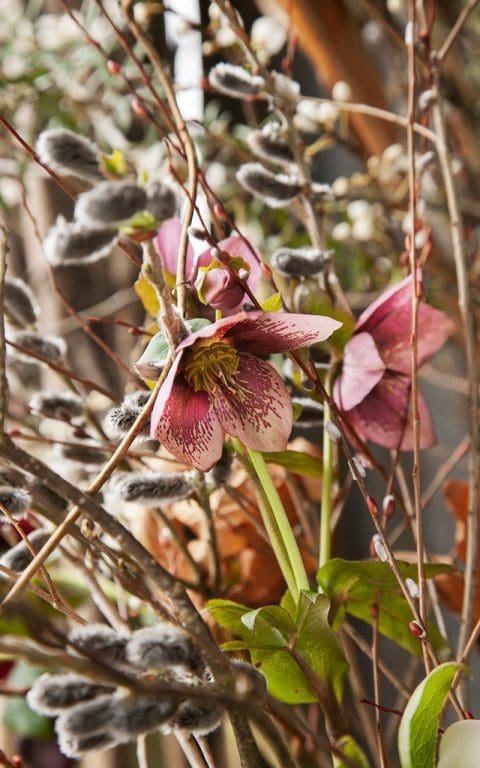
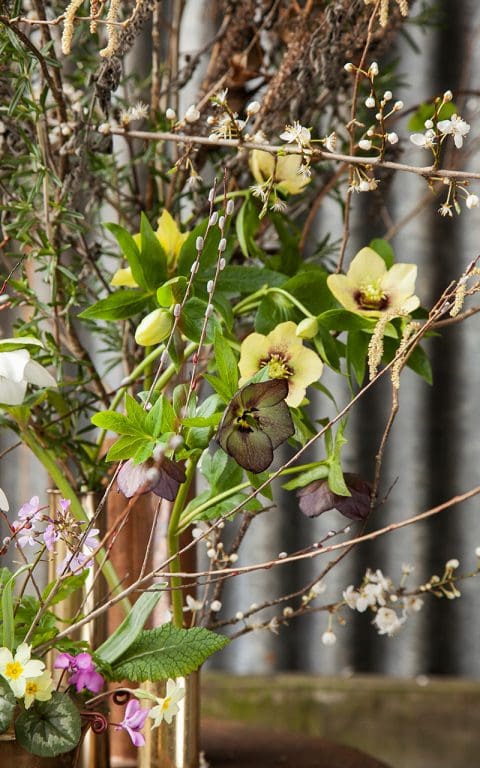
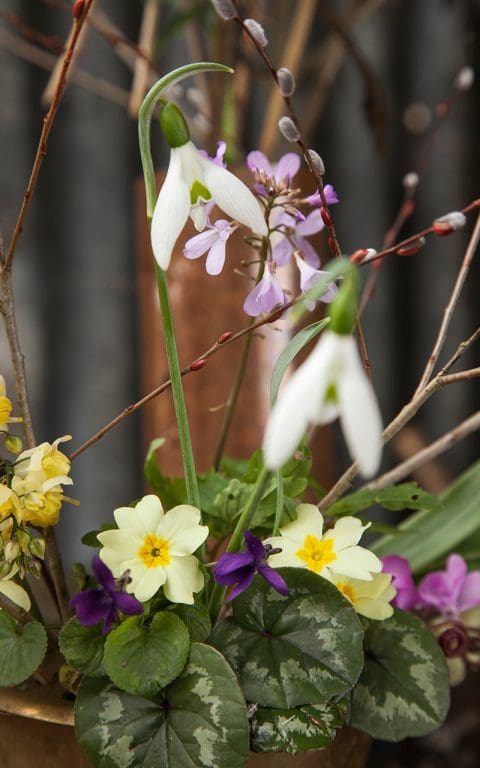
Asclepias tuberosa
Cardamine quinquefolia
Corylus avellana
Cyclamen coum
Epimedium x versicolor ‘Sulphureum’
Eurybia x herveyi
Galanthus elwesii ‘Cedric’s Prolific’
Gladiolus papilio ‘Ruby’
Glycyrrhiza yunnanensis
Helleborus hybridus Double black
Helleborus hybridus Single black
Helleborus hybridus Single Dark Pink Spotted
Helleborus hybridus Single Green Picotee Shades Dark Nectaries
Helleborus hybridus Single white dark nectaries
Helleborus hybridus Single yellow spotted dark nectaries
Lonicera periclymenum ‘Graham Thomas’
Primula vulgaris
Prunus cerasifera
Quercus robur
Rosmarinus officinalis
Salix gracilistyla
Salix purpurea ‘Nancy Saunders’
Teucrium hircanicum ‘Paradise Delight’
Verbascum phoenicium ‘Violetta’
Viola odorata
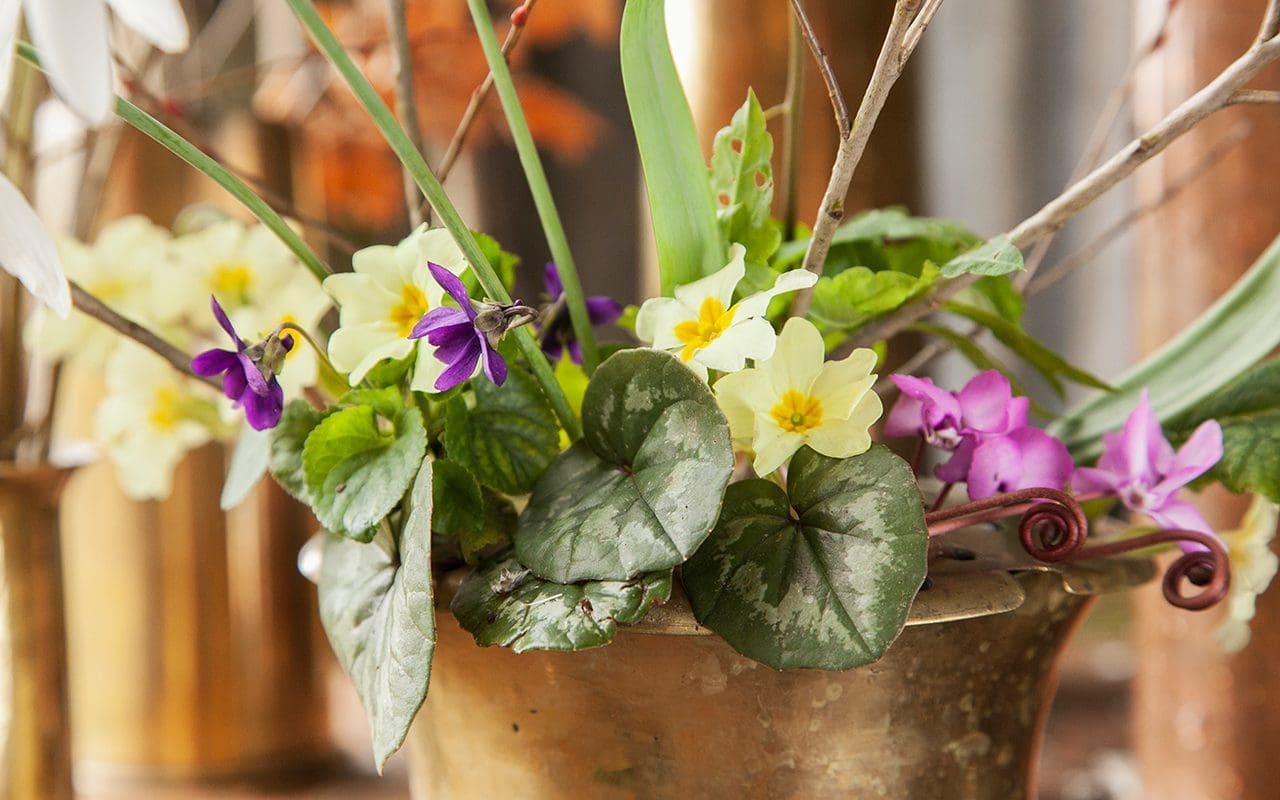
Photographs | Huw Morgan
Published 28 February 2020
Huw Morgan | 31 October 2019
It is almost three months since Flora first came to Hillside to work with material taken from the garden here. That summer visit was an introductory and learning experience for us both. Flora’s first time in the garden here, time needed to get to know the garden, time to find a setting to shoot in, the challenges of working outside and to be photographed in process when she is usually unseen, off stage. For me there was the self-imposed pressure to do Flora’s art justice in my photographs and to capture those moments of consideration, reflection, decisiveness, choice, care, which I was witness to as she worked.
As she worked this time I started to notice the ways in which Flora relates physically to the space in which the flower arrangement was being made. Standing with her back to me I could tell that she was judging, evaluating, balancing, deciding, framing, all of which could be read from the set of her jaw or the angle of a shoulder. The delicacy with which she would select a stem, find a location for it, and then gently and firmly aid and guide it into position. The final stroking of the plant to allow it to fall naturally and also the sensual pleasure of engaging with plants this intimately.
It reminded me of something Midori, the head gardener at Tokachi Millennium Forest said to us when she was staying here early last autumn, which is that the last flower arrangements of the year should be relished as they are the last opportunity for ‘touching green’ before the winter comes.
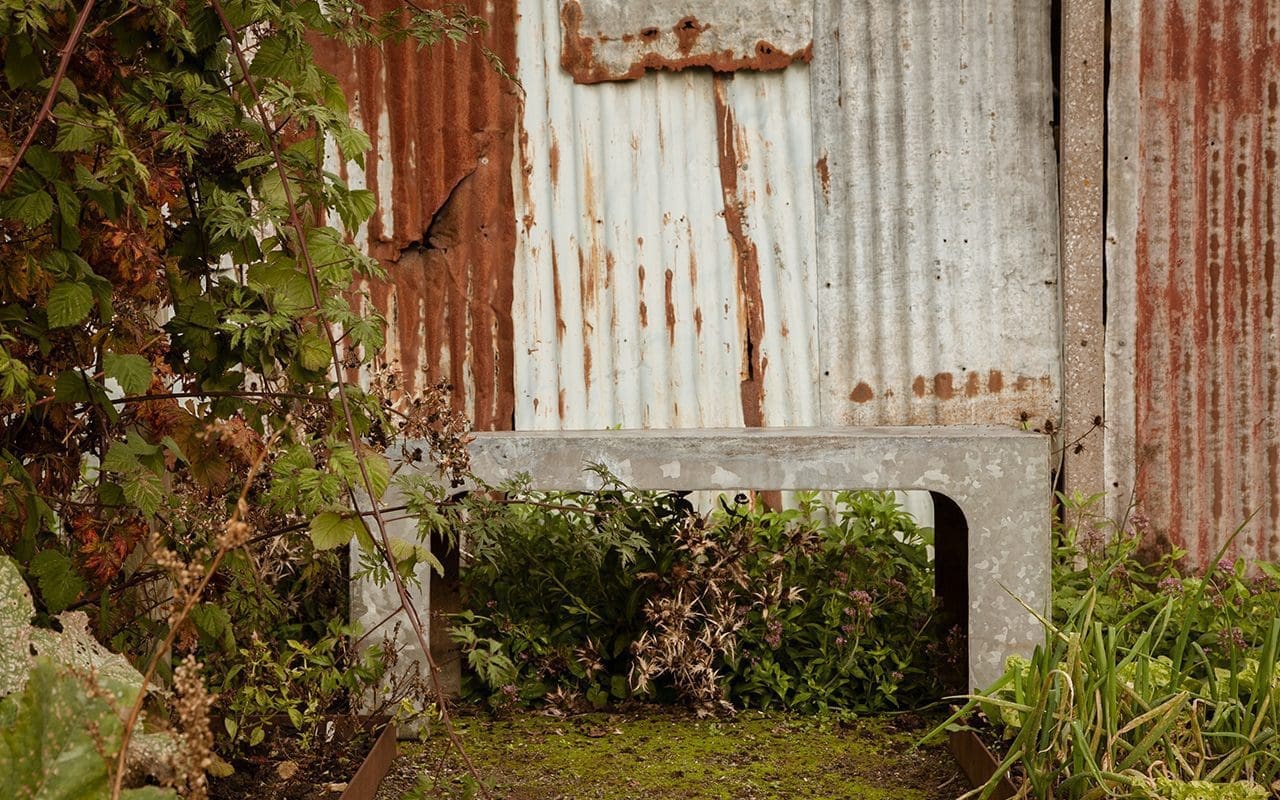
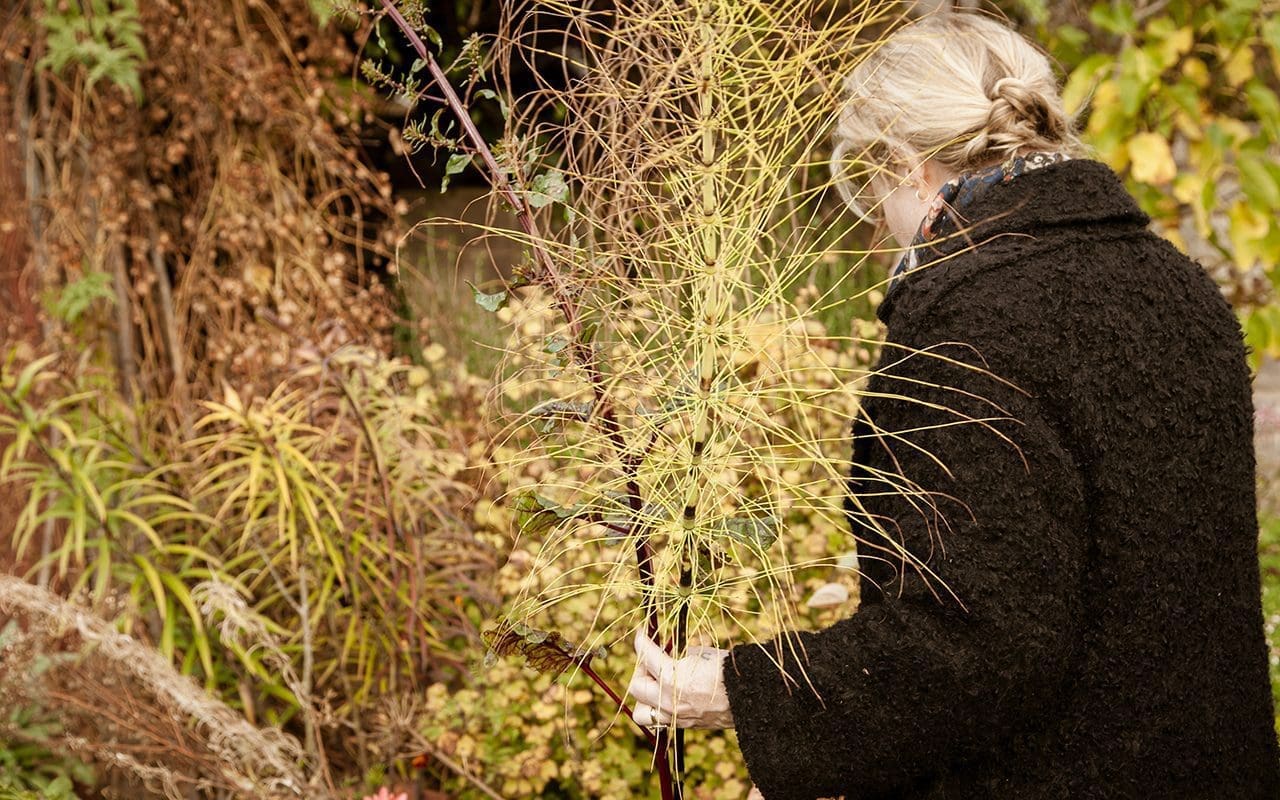
Flora Starkey | 1 November 2019
The last time I came to Hillside, Summer was making way for Autumn. This visit Autumn is peaking and the gardens are more subdued, but no less splendid.
We decided to shoot in the same location as before, in front of the beautifully rusted corrugated iron barn. I’m interested to see how the four images will sit together by the end of the year and like the idea of them being in the same place.
As before, we cut sparingly – no more than a few stems from each plant. This time I chose a lot of dried structure – dill, red orache, fluffy willow herb and a stem of Thalictrum ‘White Splendide’ with its delicate mottled yellow leaves. And of course, some essential autumnal colour in the form of Euphorbia cornigera and a snipping from the fiery Prunus x yedoensis.
Moving back to the barn, we pick some blue glass jars from the house & get to work. The space will always dictate the arrangement in terms of scale and the zinc table outside calls for size, not least because of the October wind.
The tall dried pieces were placed first creating the framework, a beautiful Aster umbellatus towering over the others. A few leaves of royal fern quickly followed, adding a myriad of colours in each stem. I carried on building the colour with warm tones before offsetting with the deep blues and violets of a few varieties of salvia.
Even though the stems keep get buffeted by the wind and moving around, I like this way of working. It’s spontaneous & can’t be too precious. After a while, I feel like we’re missing some pops of brighter colour and go foraging for rosehips, finding some spindleberry on the way.
As these are more structural branches, I end up taking the arrangement apart & starting again, adding these elements earlier. Some of the salvia had also started to wilt by the time we got back so we cut a little more. If I were to use this again, I’d try & sear it to make it last longer. I finish with a curling tail of yellow amsonia, a shock of pale yellow scabious and some shiny black berries of wild privet.
As well as wanting to represent the garden in all her autumnal glory, I was also keen to make a smaller and simpler arrangement – something quieter that allows the stems their space to shine. It’s probably how I’m happiest working.
The picture window outside the milking barn provides the setting and frames the vases with the changing landscape behind. I start with a length of old man’s beard and some more euphorbia. A few stems of panicum & chasmanthium add height along with a speckled toad lily. A sprinkling of dainty white asters were added lower down and some oxblood red leaves of fagopyrum trail off to the side, slightly broken but more beautiful for it.
Back in the garden & you can see the silhouettes of winter beginning to appear. Huw & I spent a little time looking at the plants that we’d like to dry and preserve for our next shoot. I’m looking forward to the change of the season already
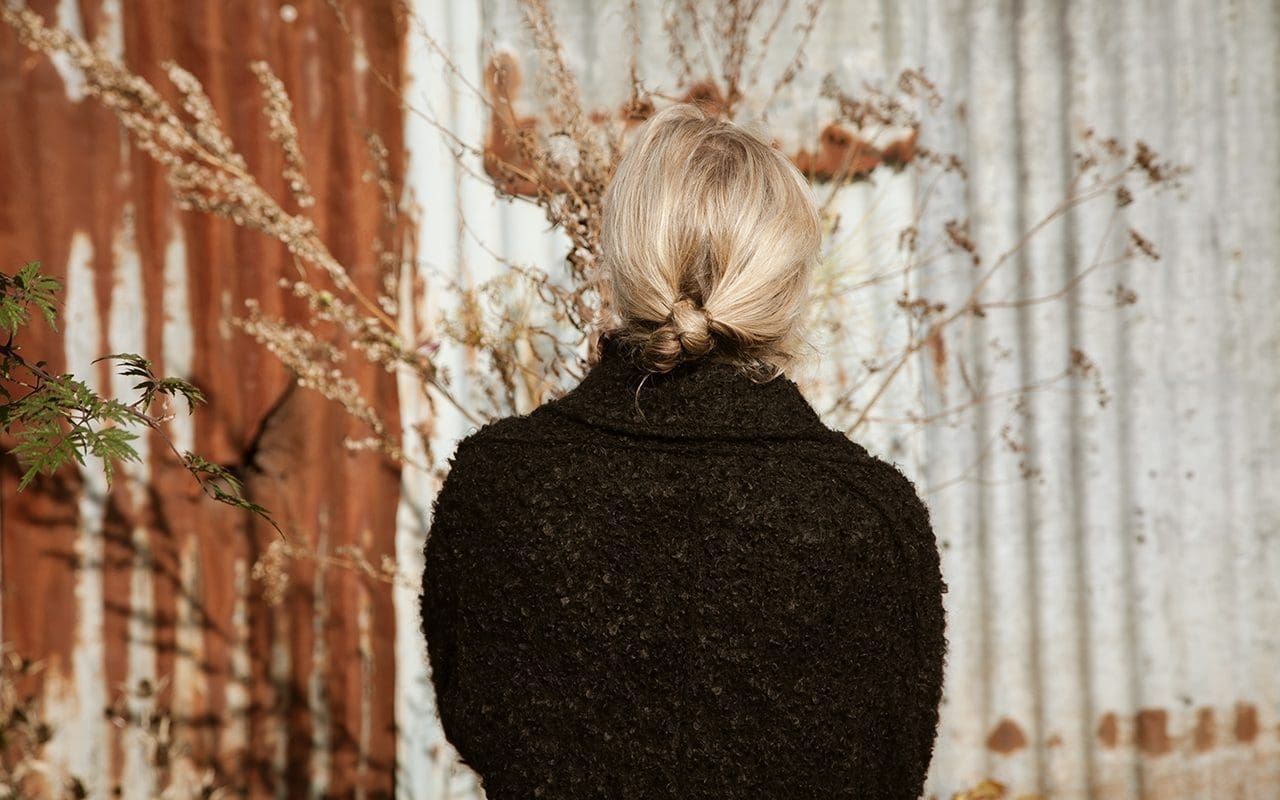
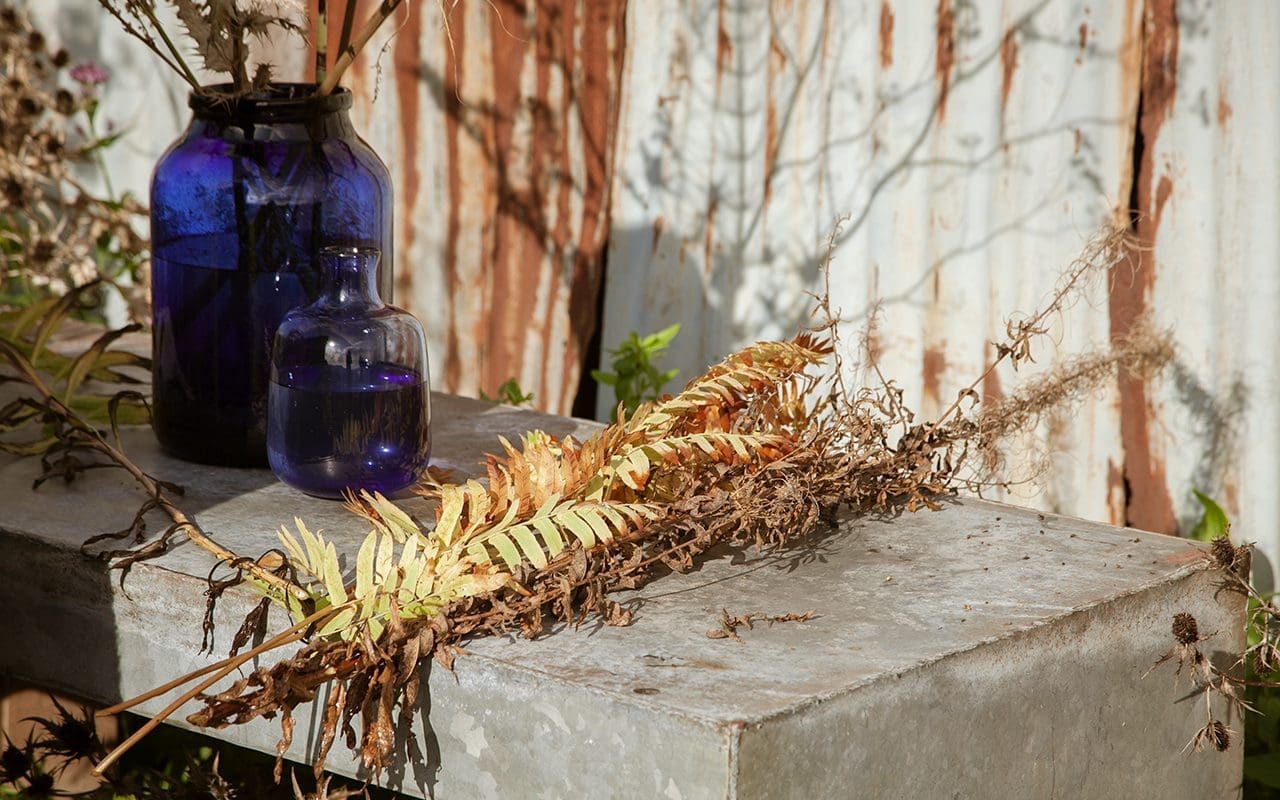
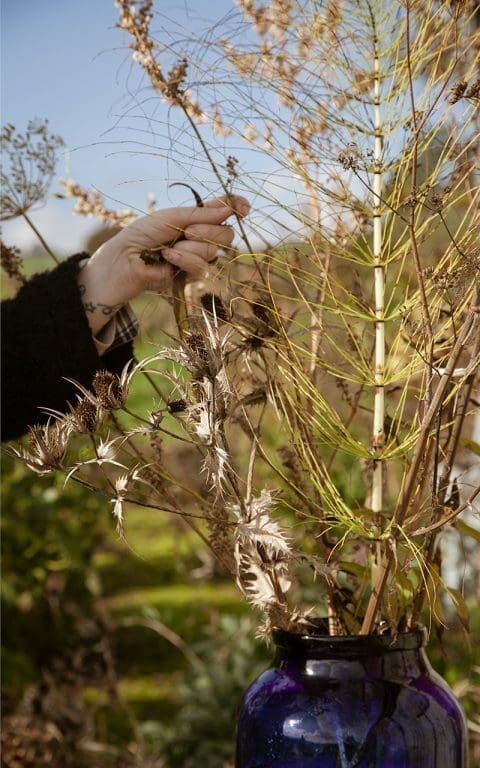
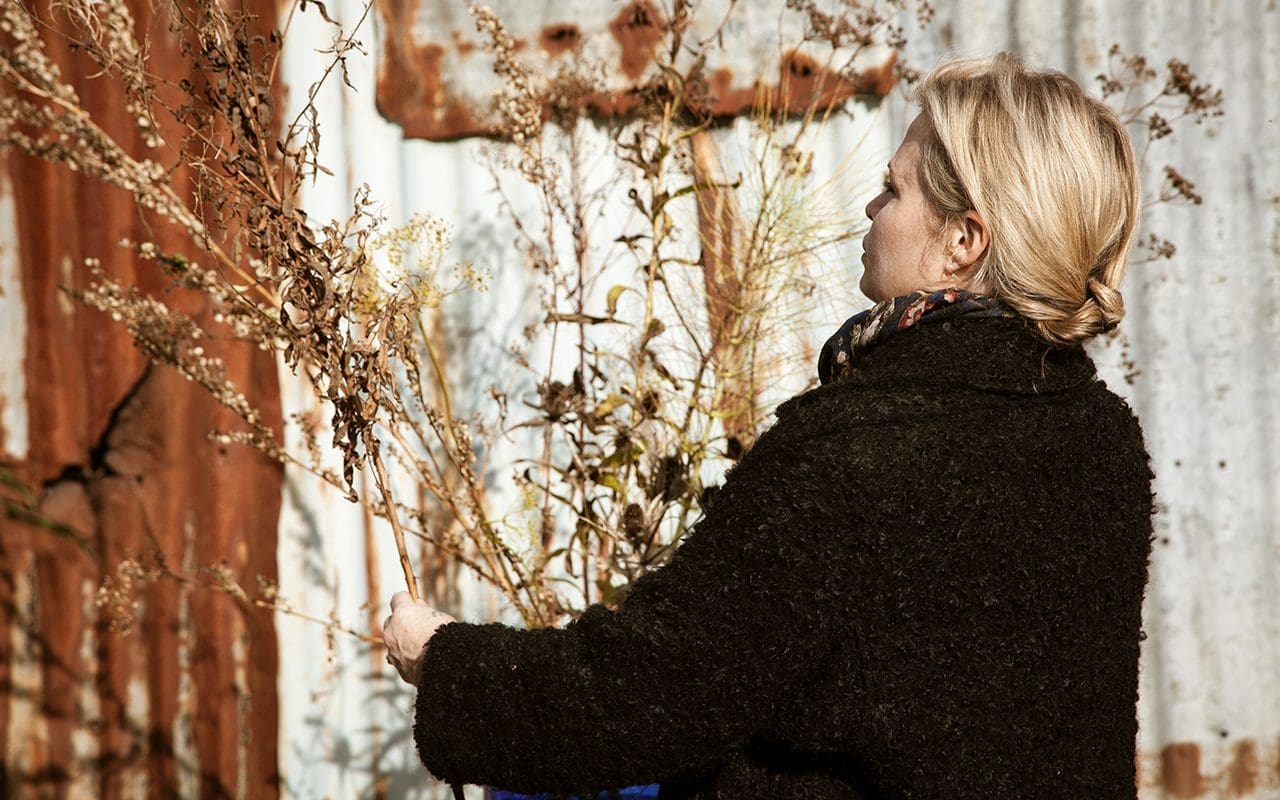
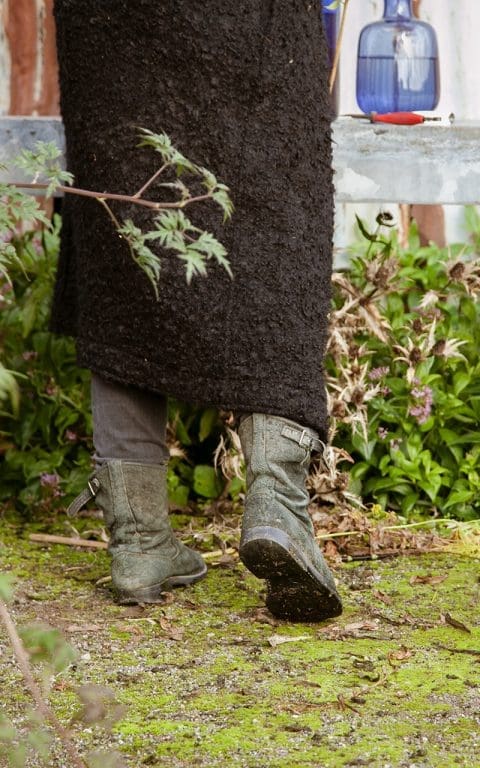
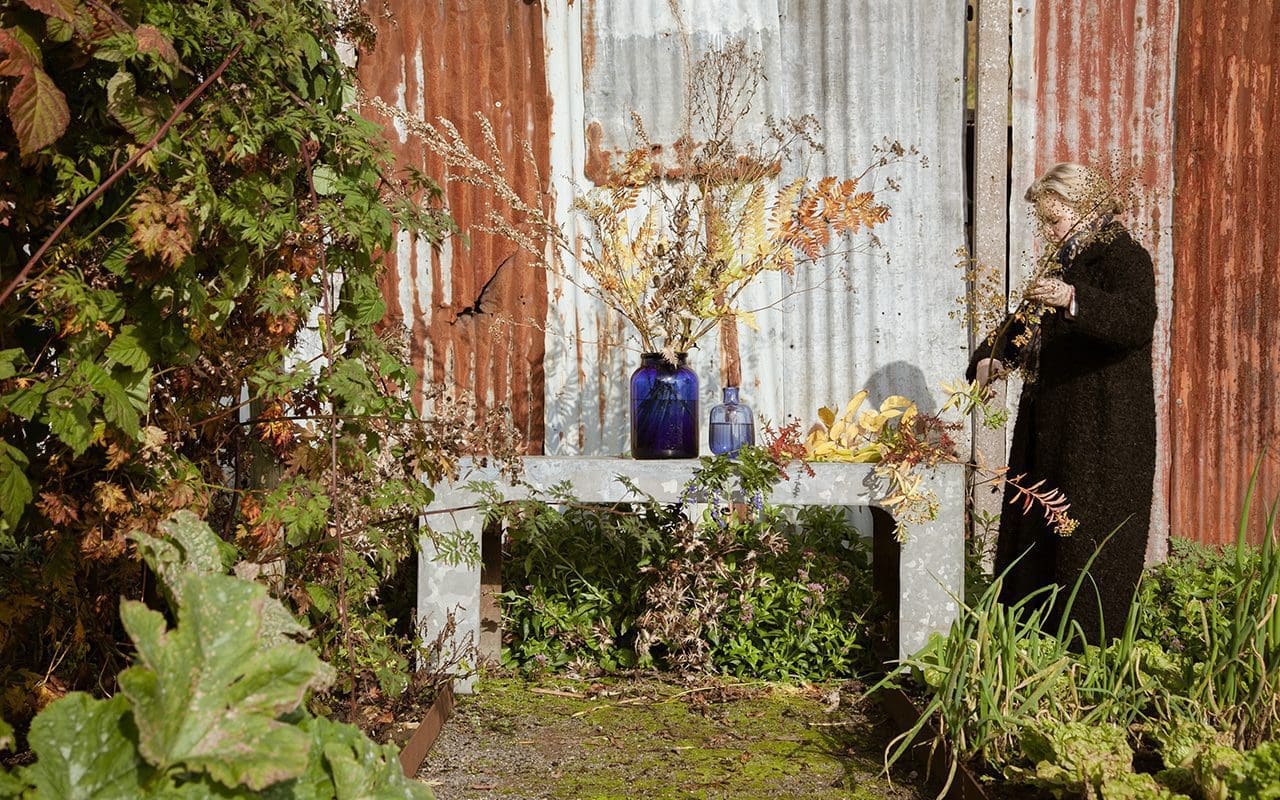
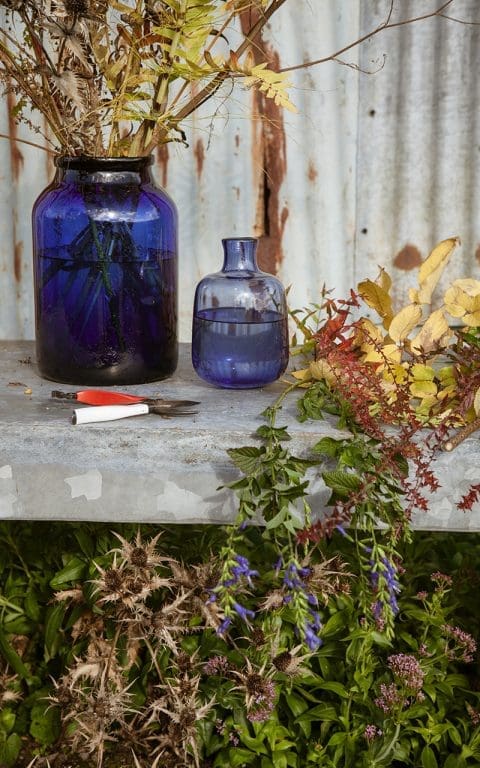
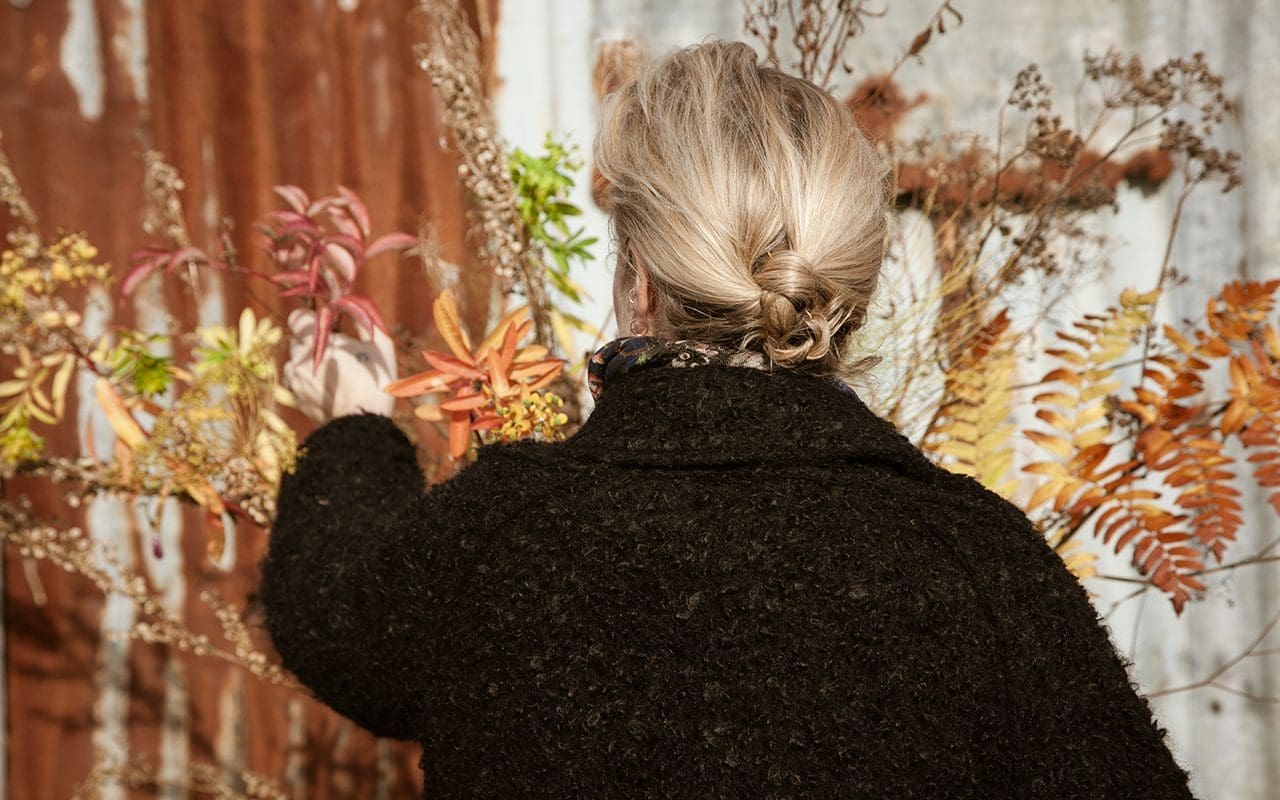
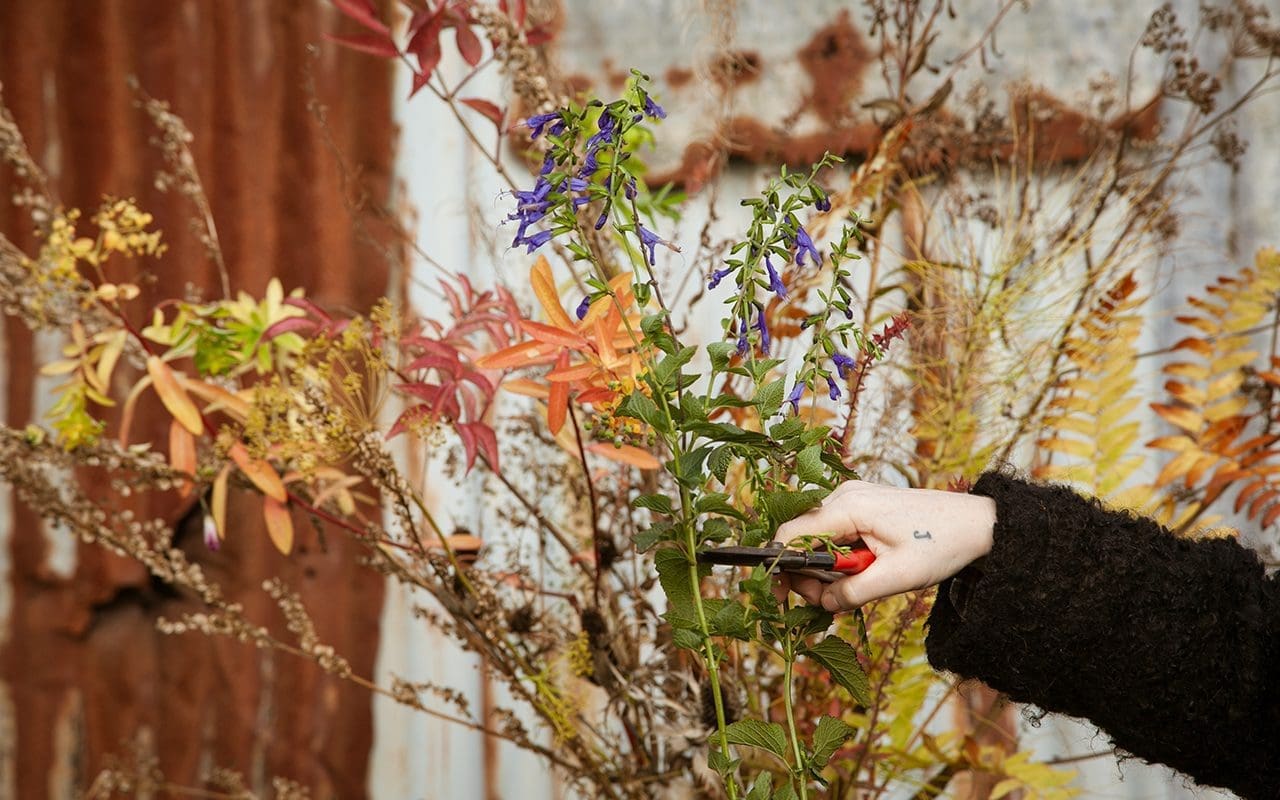
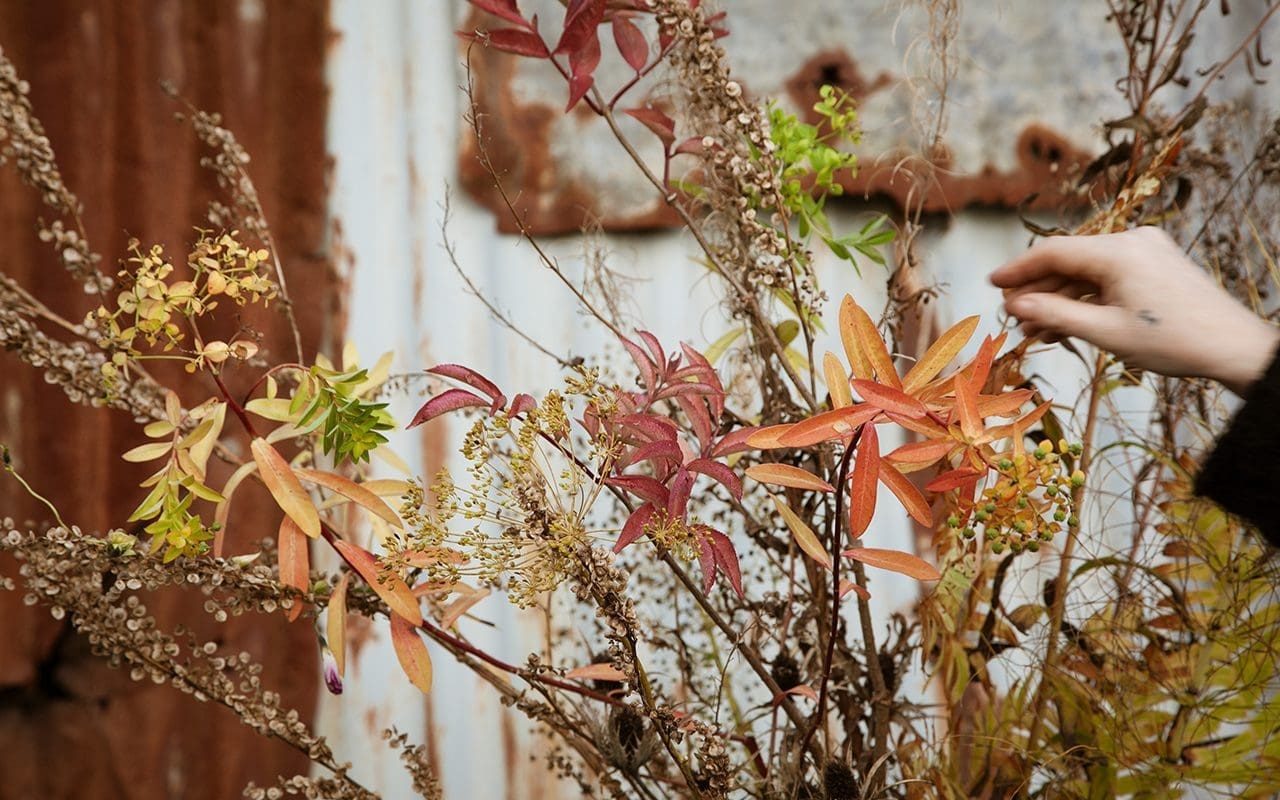
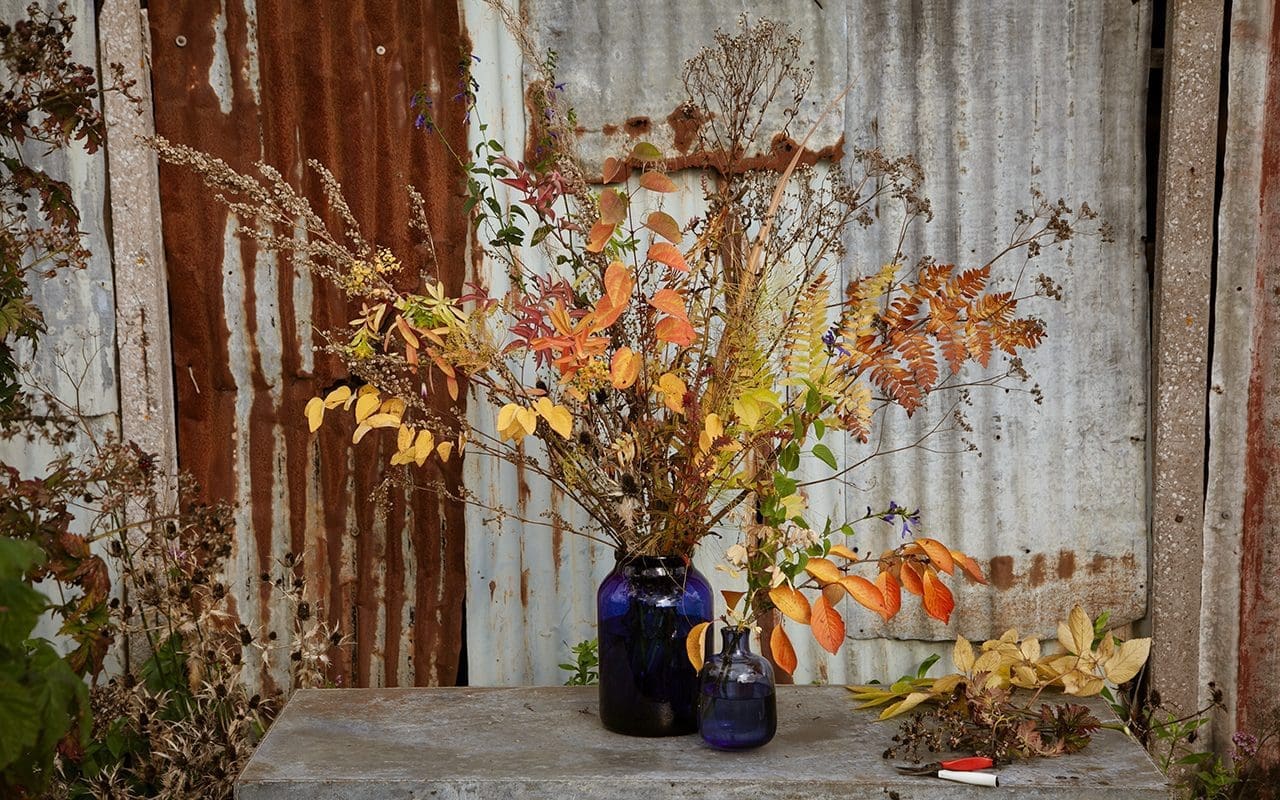
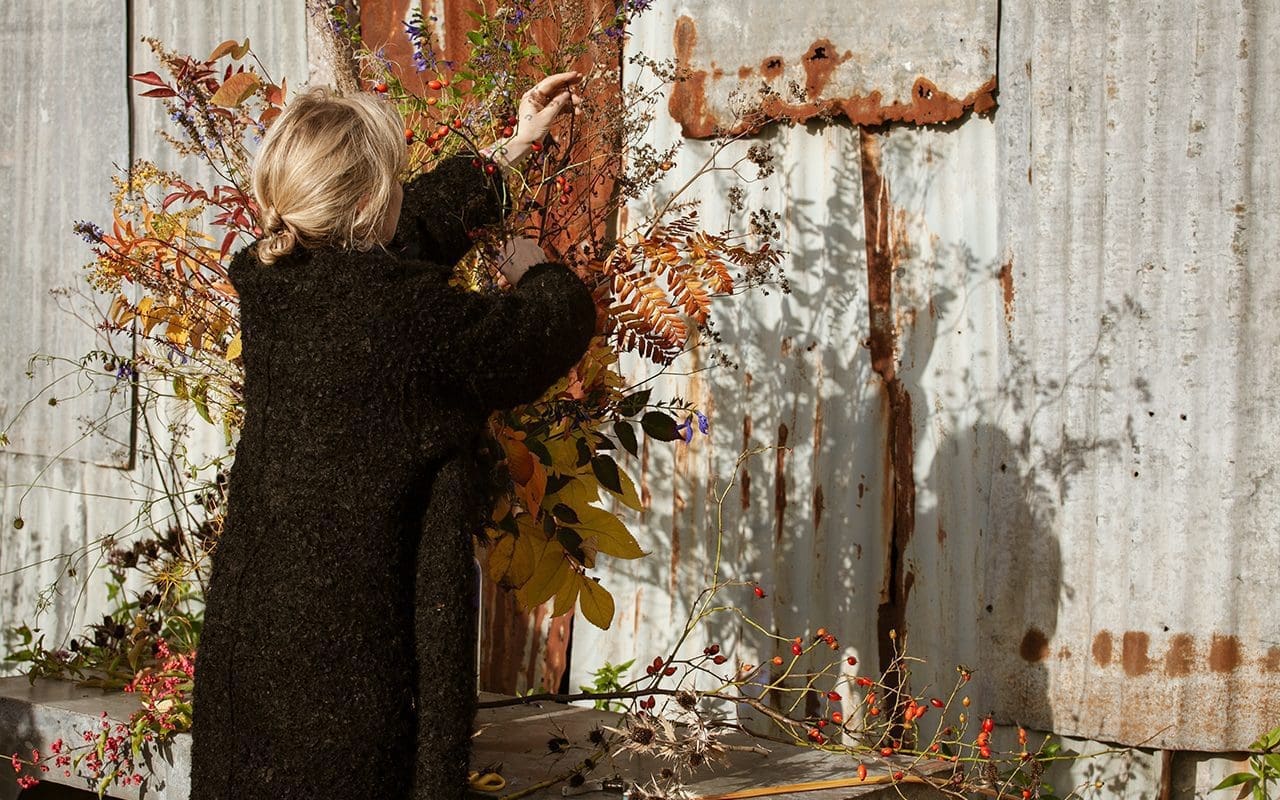
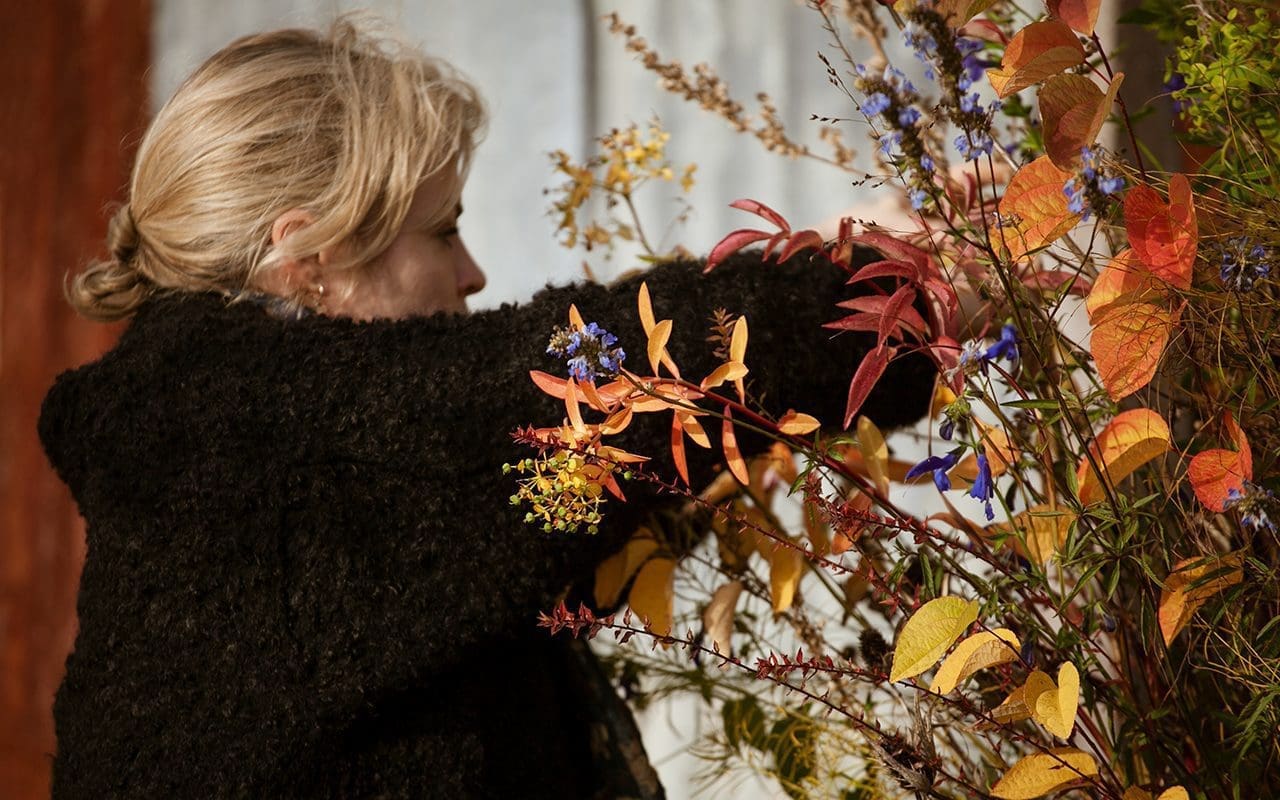
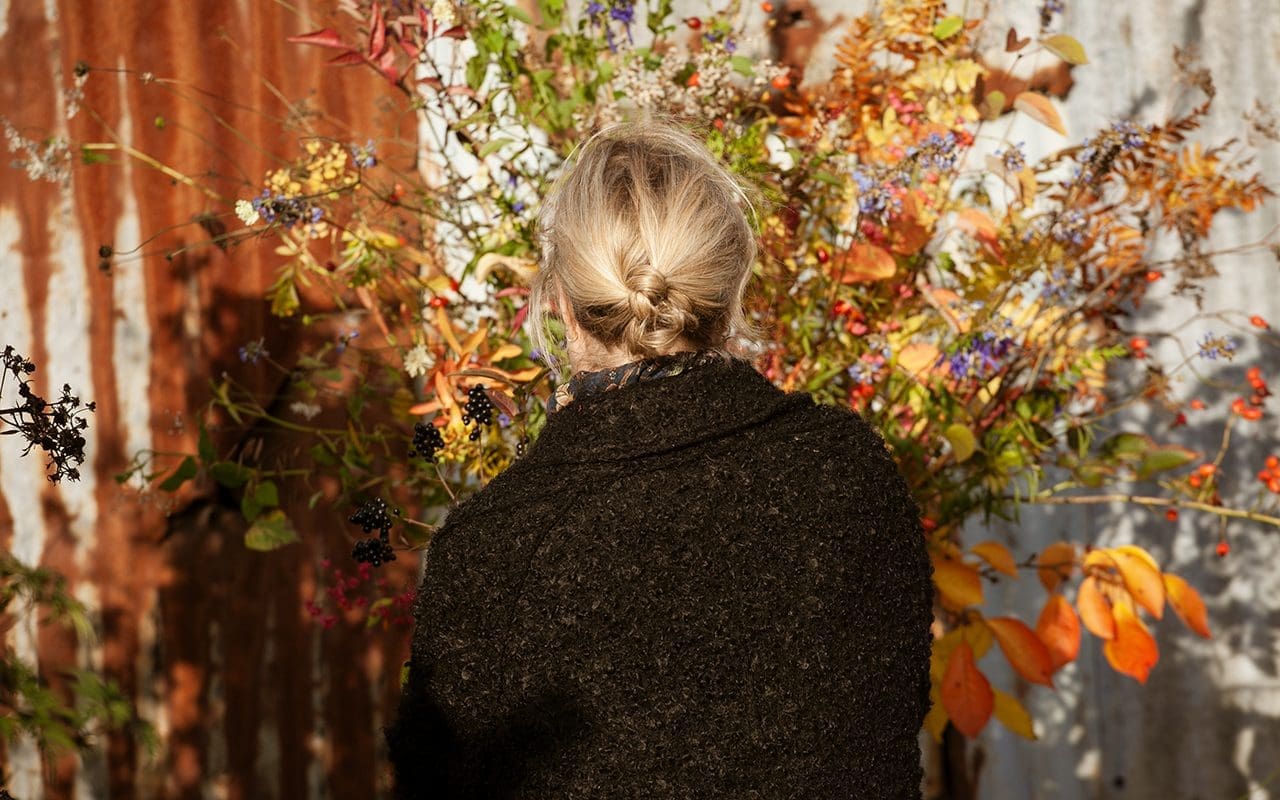
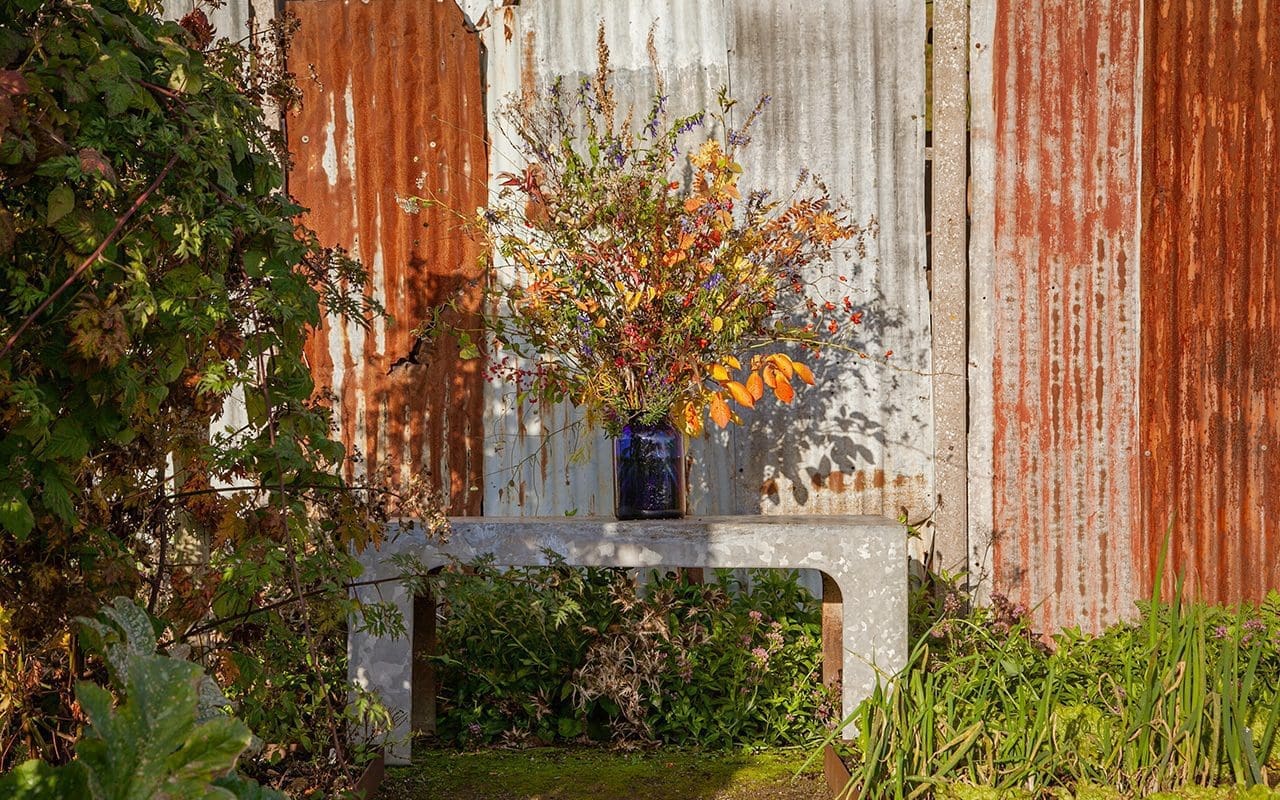
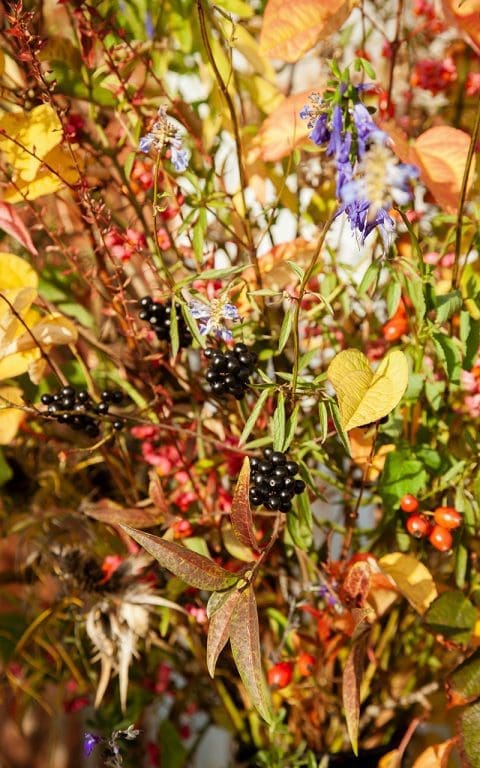
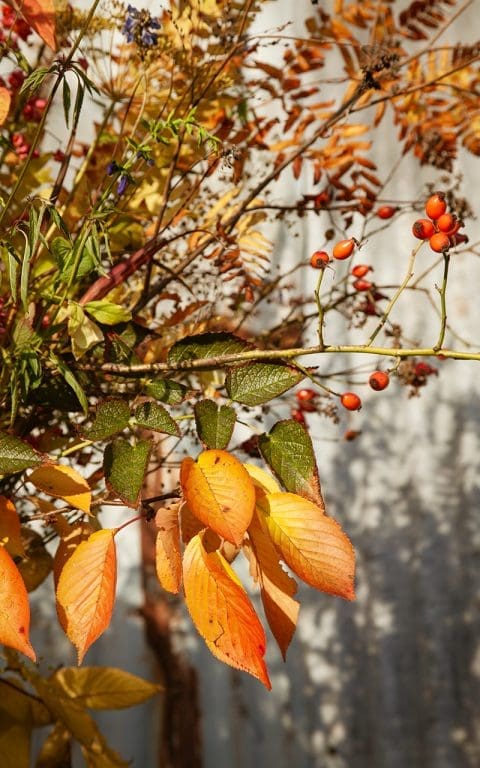
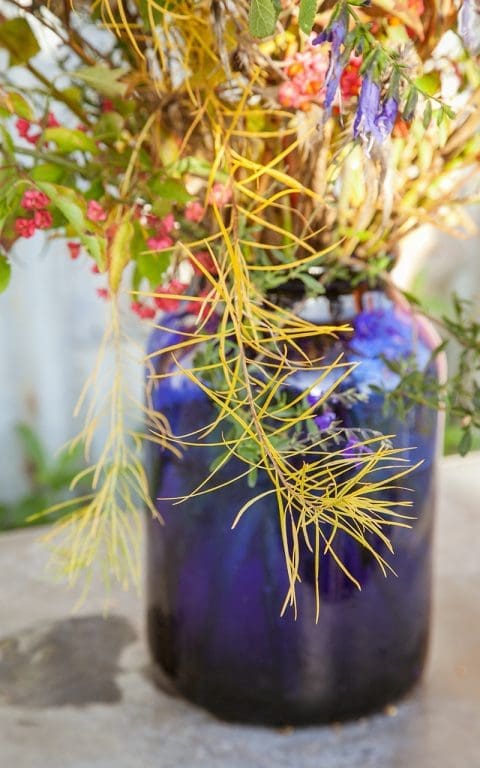
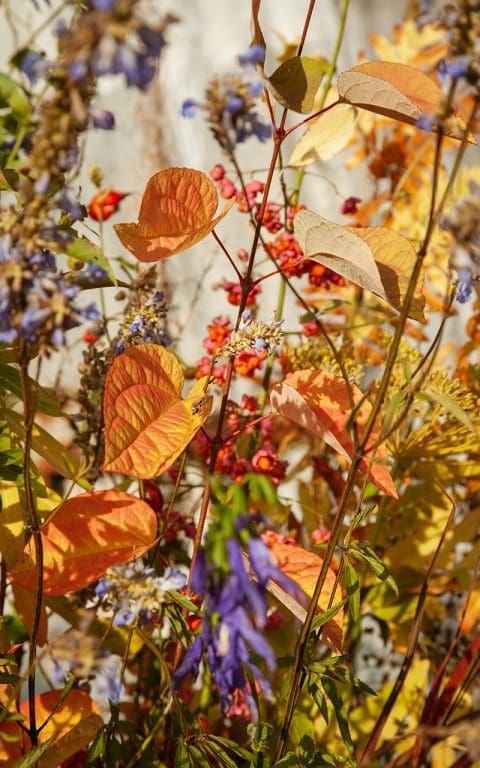
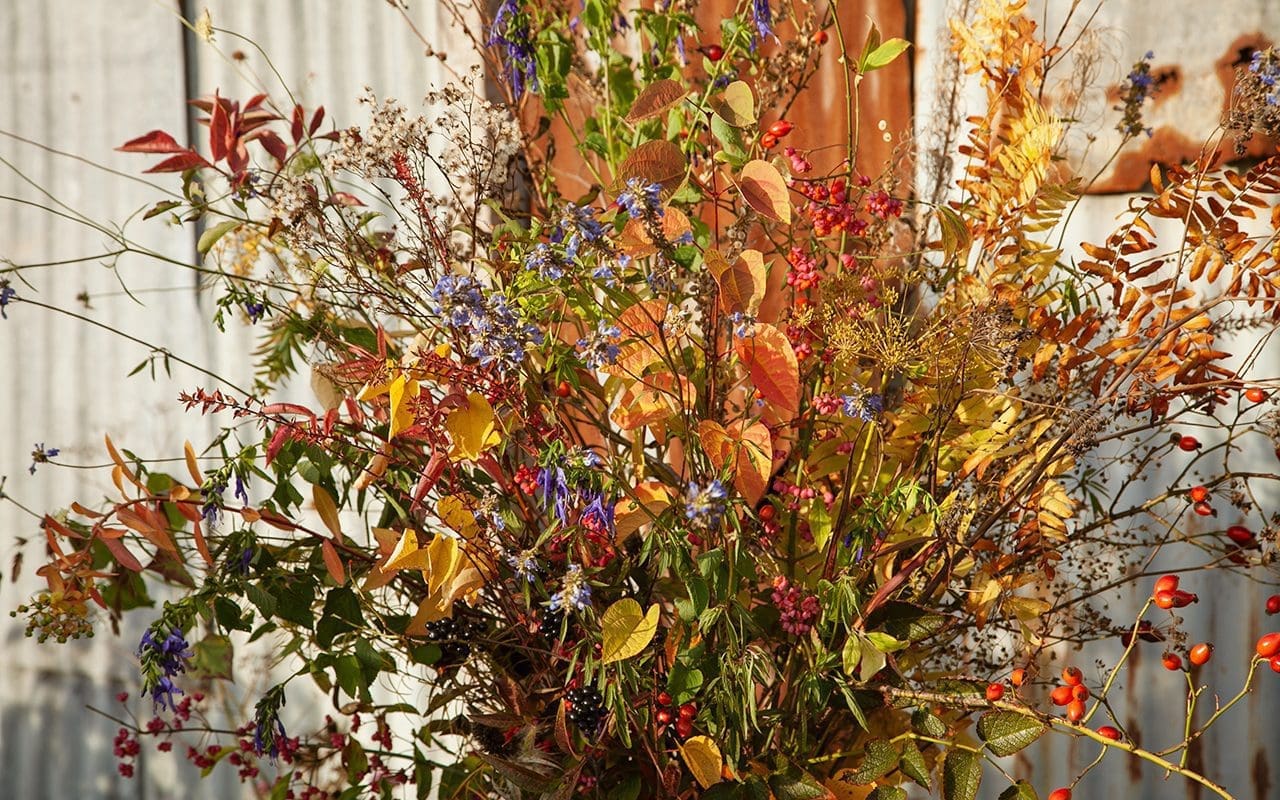
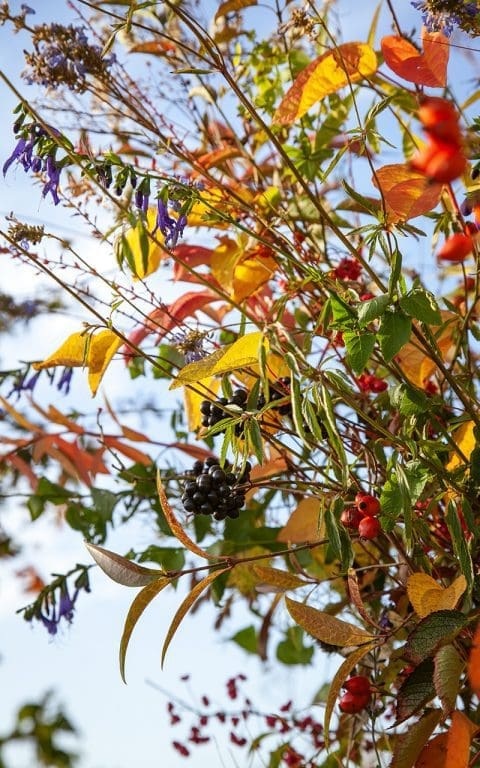
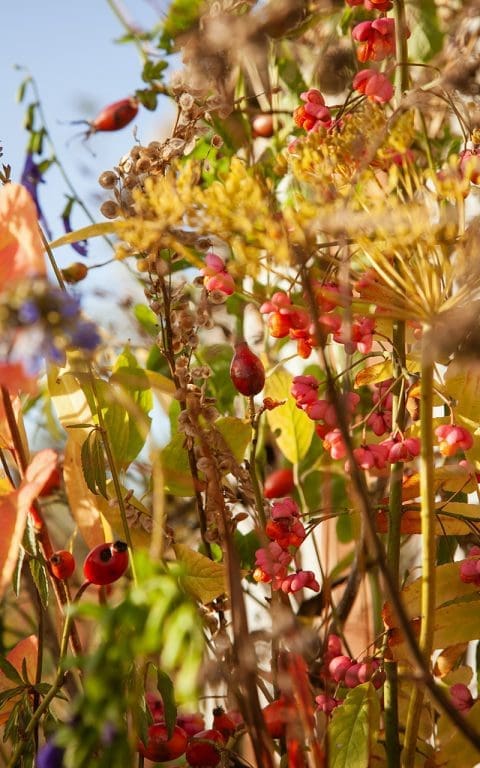
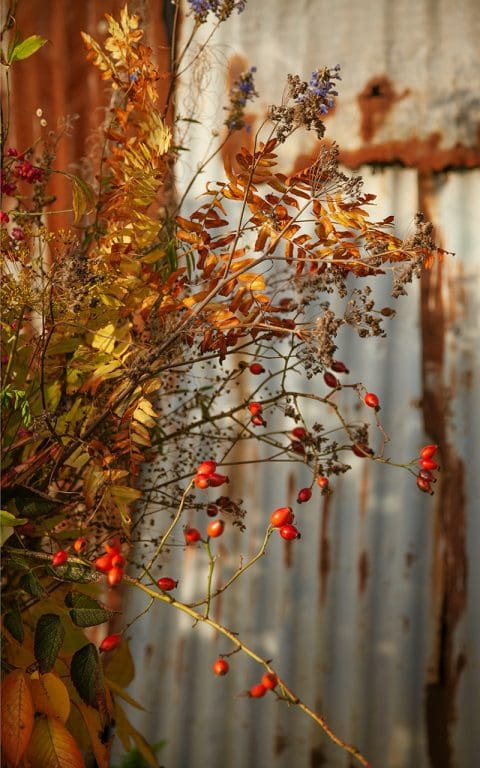
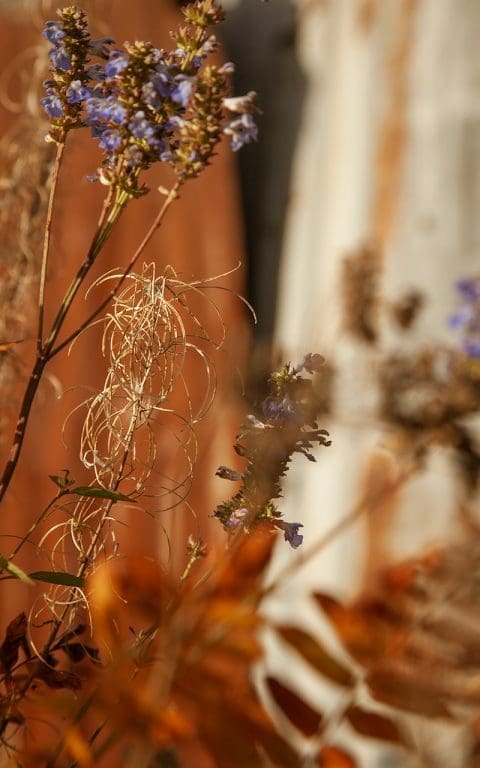
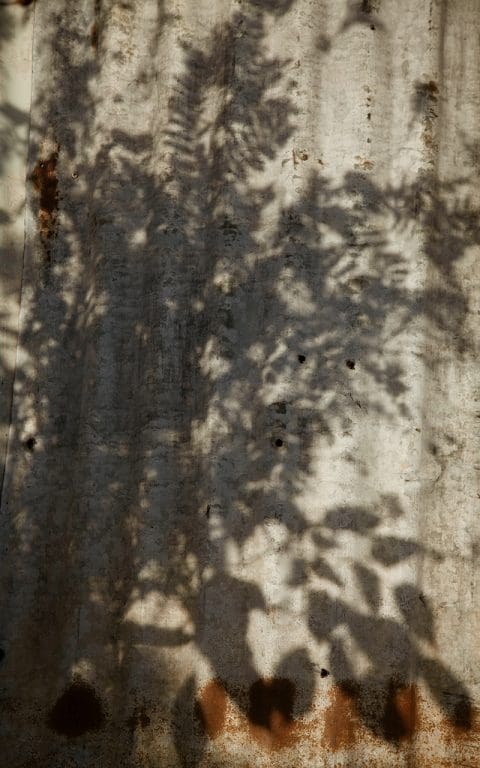
Anethum graveolens
Aster umbellatus
Astilbe rivularis
Atriplex hortensis
Cercidiphyllum japonicum
Chamaenerion angustifolium ‘Album’
Chasmanthium latifolium
Euonymus europaeus
Euphorbia cornigera
Ligustrum vulgare
Lythrum virgatum ‘Dropmore Purple’
Osmunda regalis
Prunus x yedoensis
Rosa eglanteria
Salvia ‘Blue Enigma’
Salvia ‘Blue Note’
Salvia uliginosa
Sambucus nigra
Scabiosa ochroleuca
Thalictrum ‘White Splendide’
Thalictrum ‘
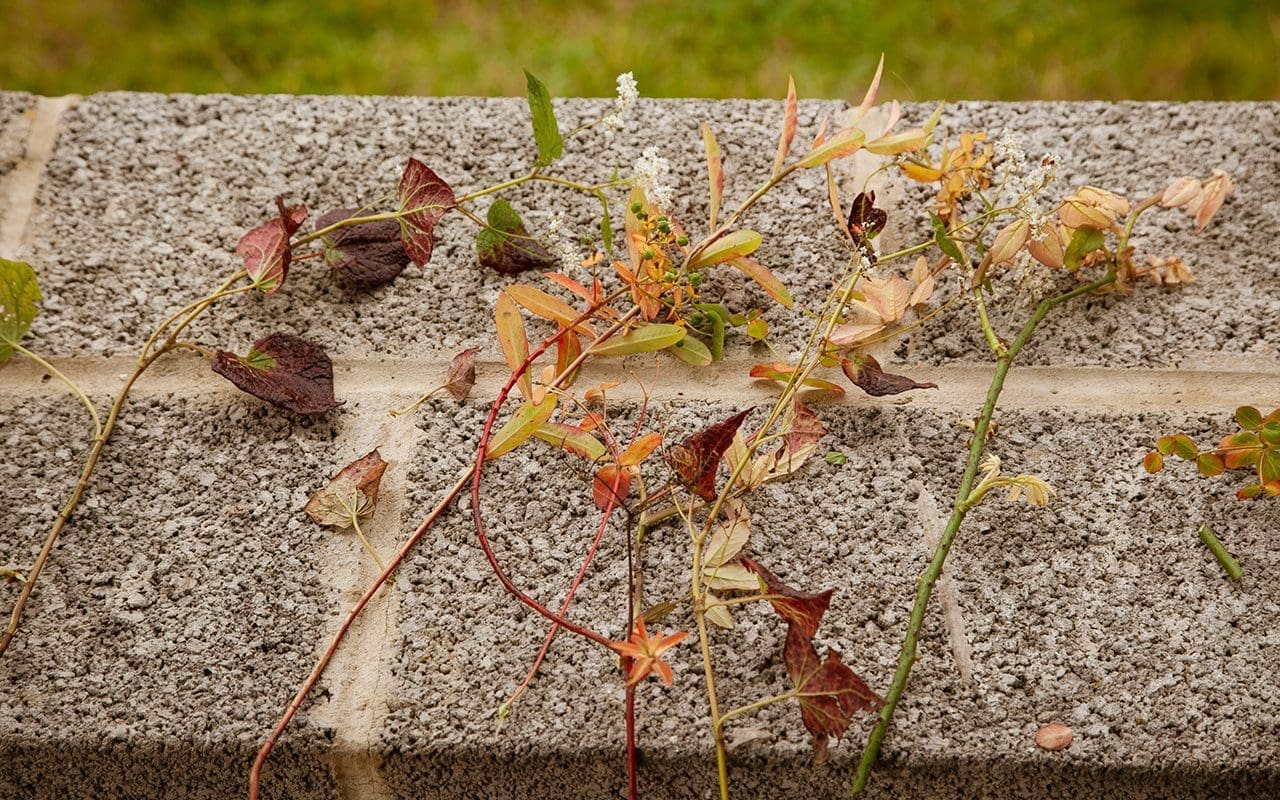
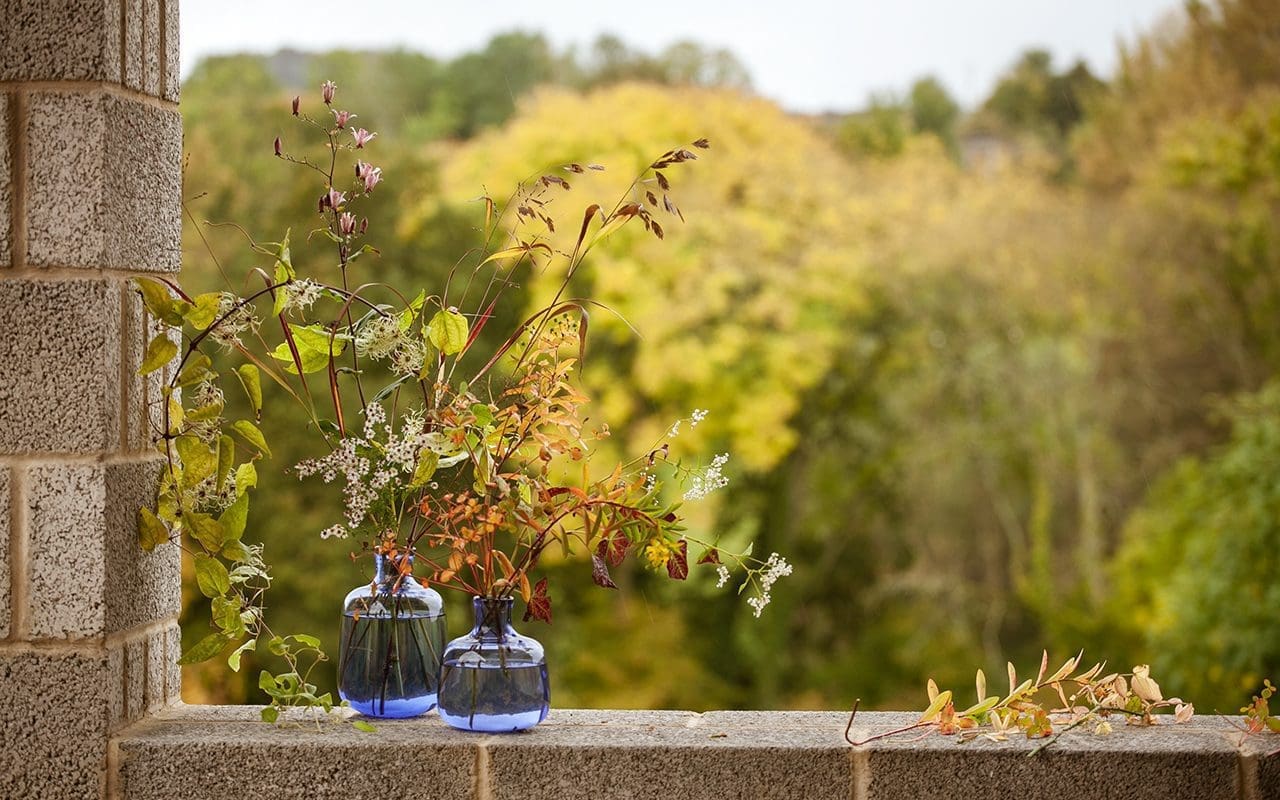
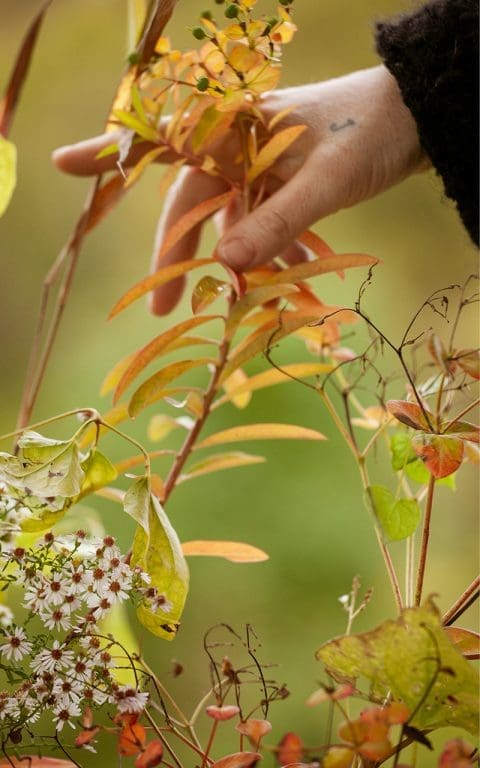
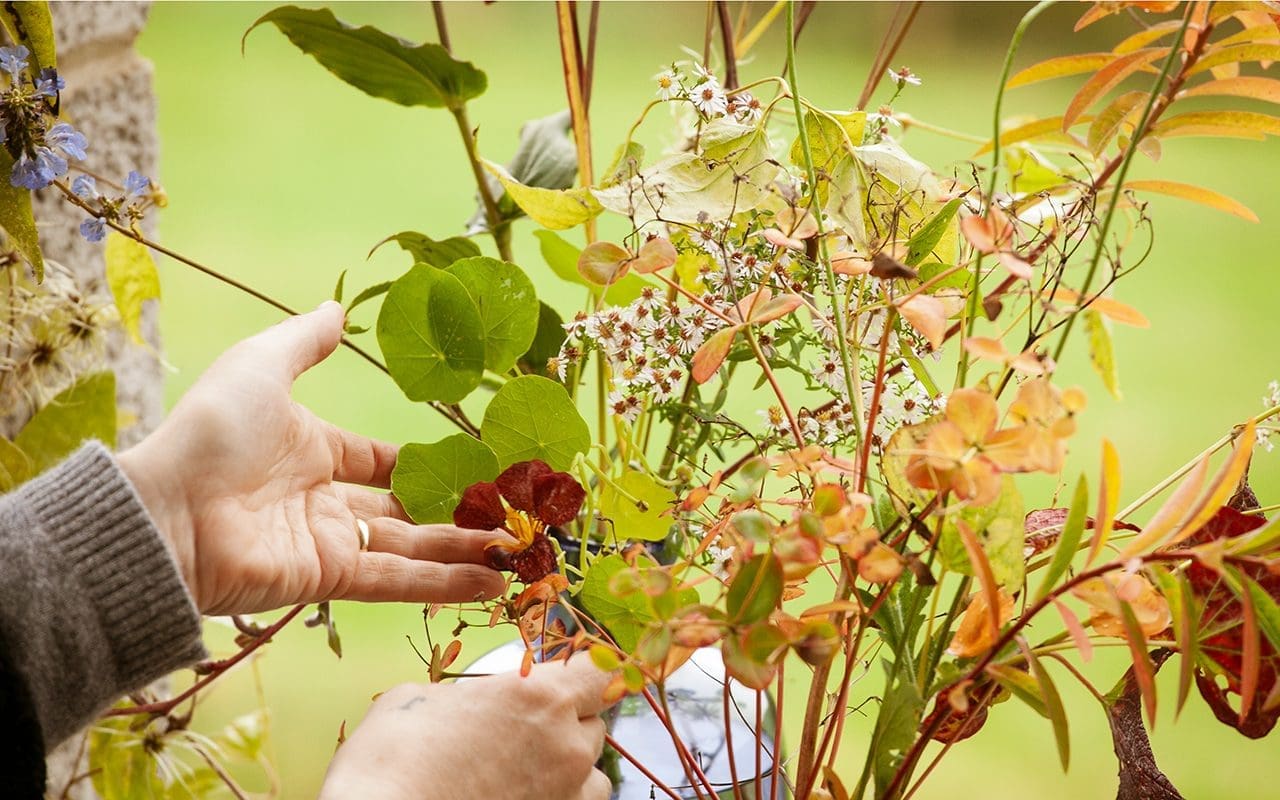
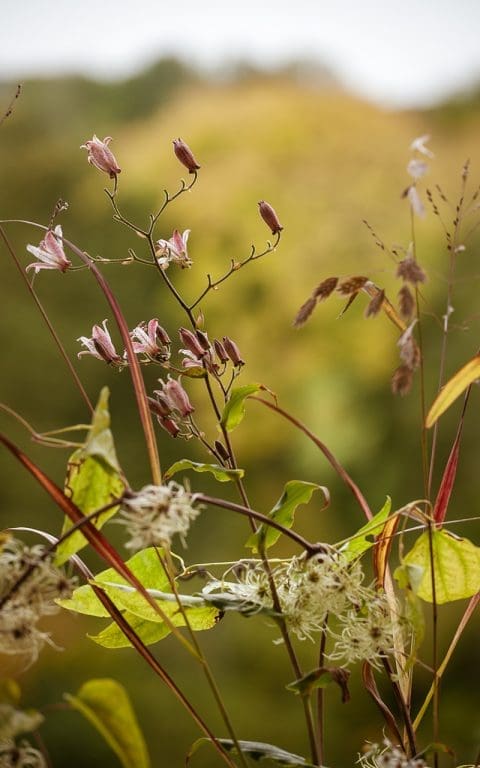
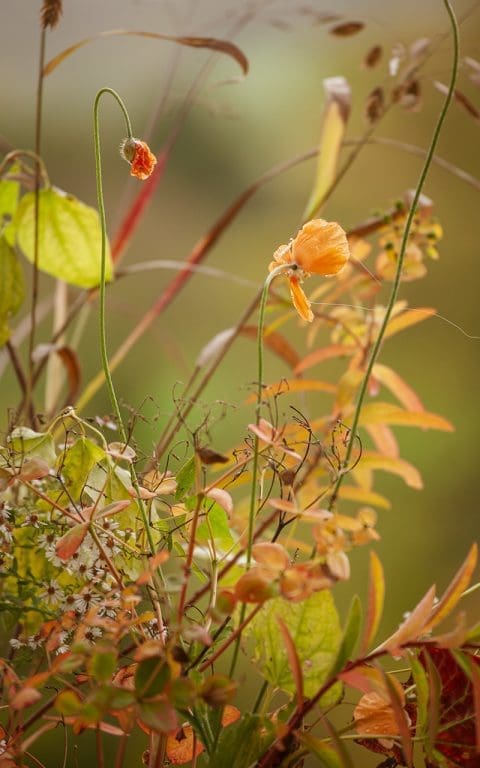
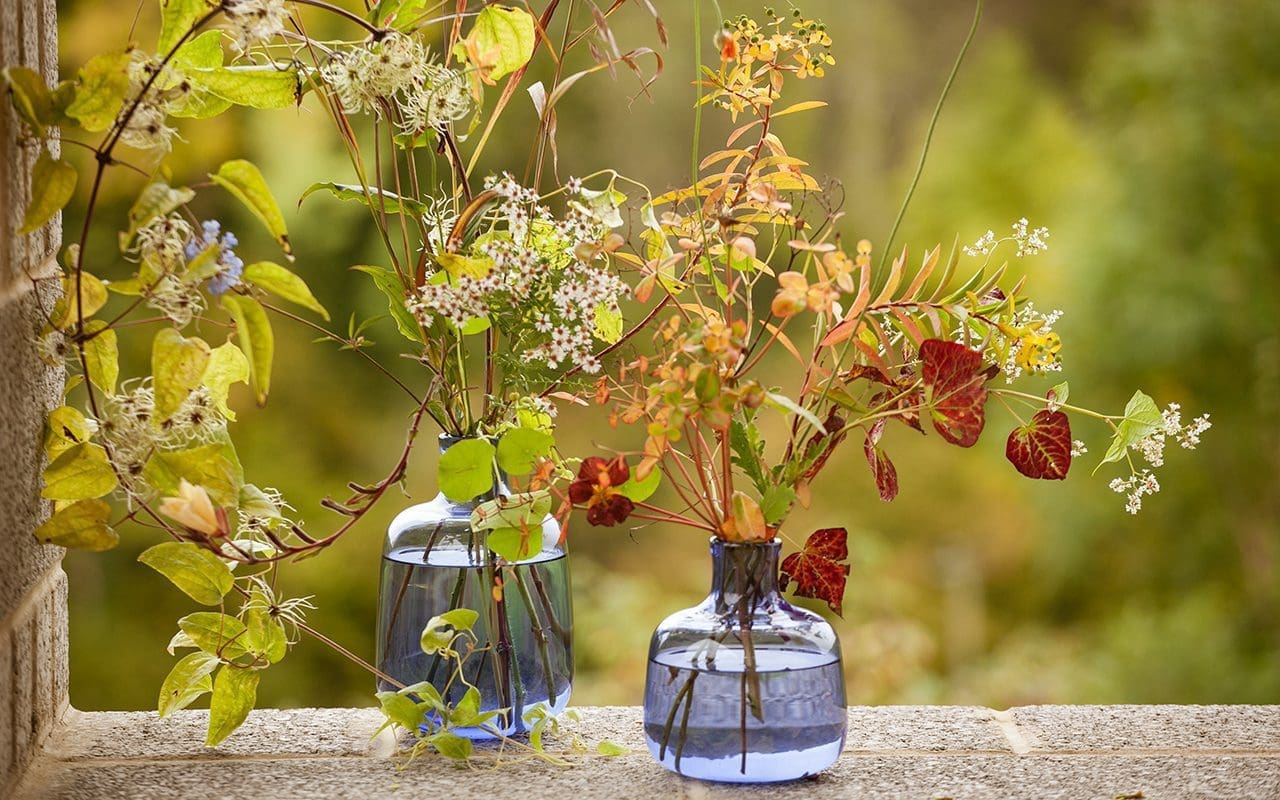
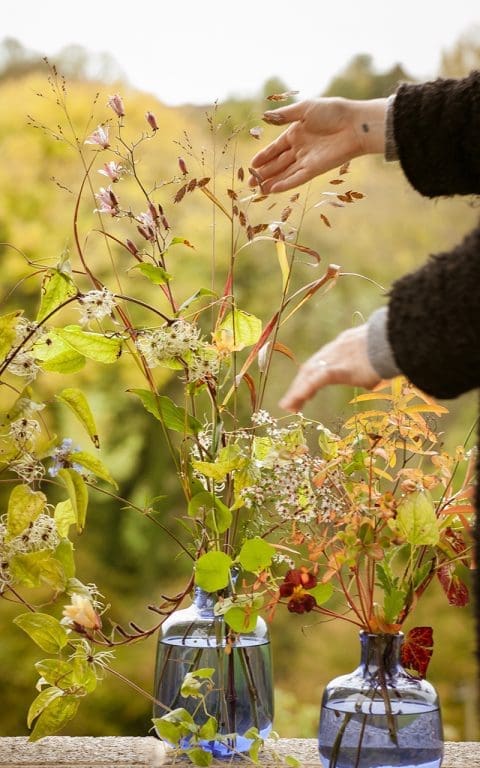
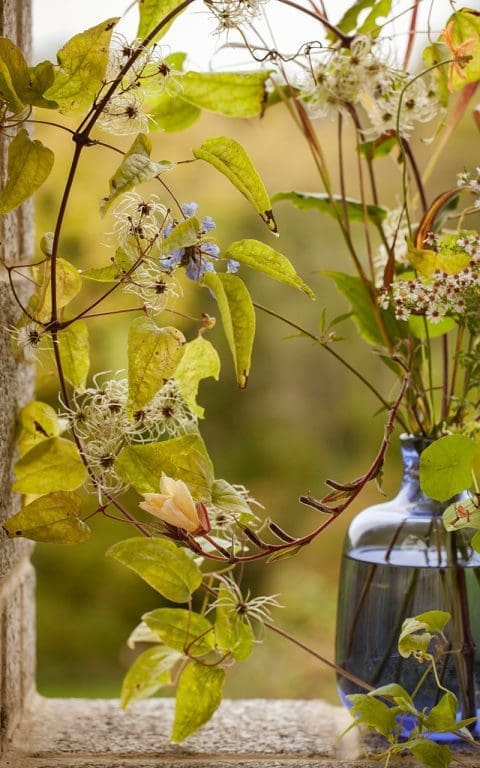
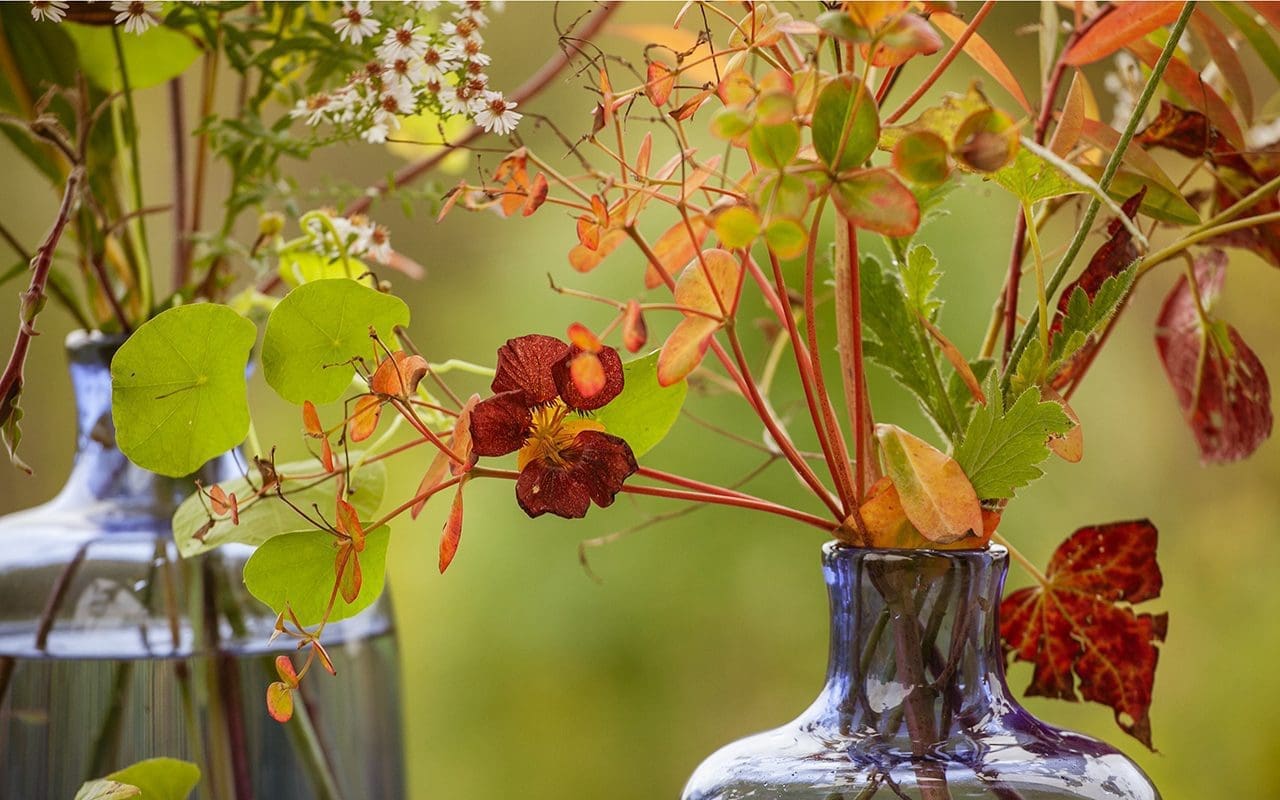
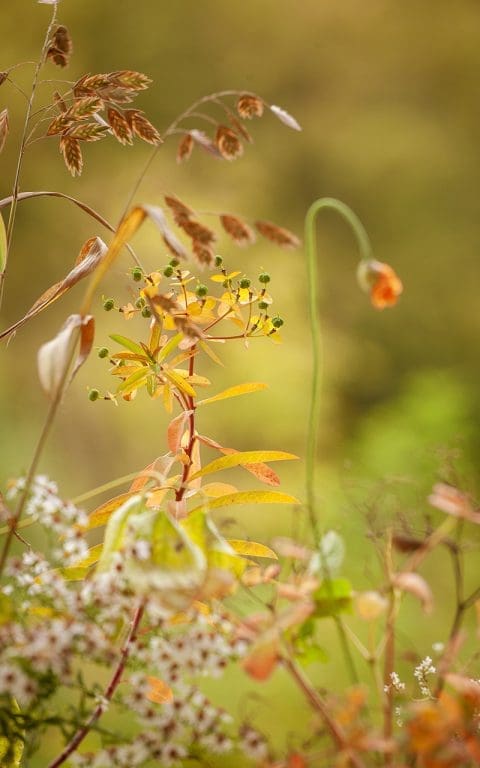
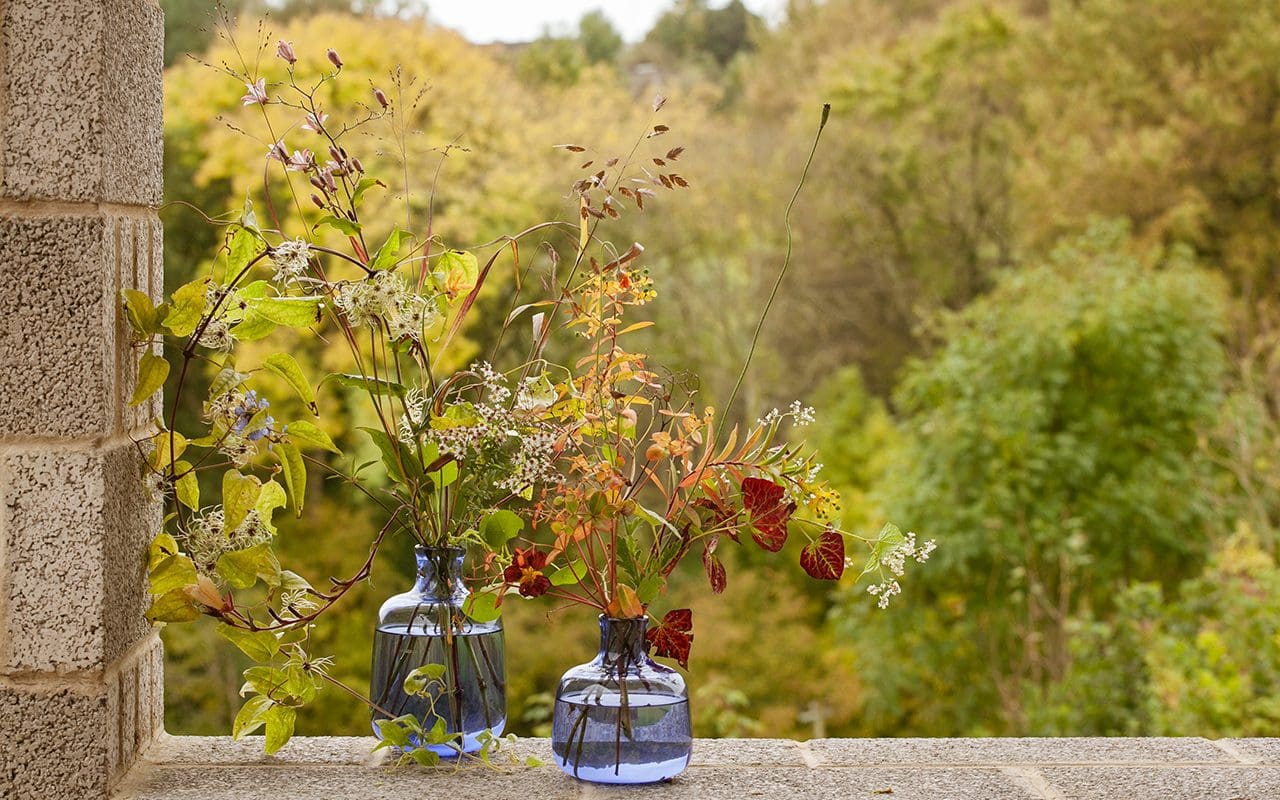
Aster unnamed white
Chasmanthium latifolium
Clematis vitalba
Euphorbia cornigera
Fagopyrum dibotrys
Oenothera stricta ‘Sulphurea’
Panicum virgatum ‘Heiliger Hain’
Papaver rupifragum
Rosa ‘The Lady of Shallot’
Salvia uliginosa
Tricyrtis formosana ‘Dark Beauty’
Tropaeolum majus ‘Mahogany’
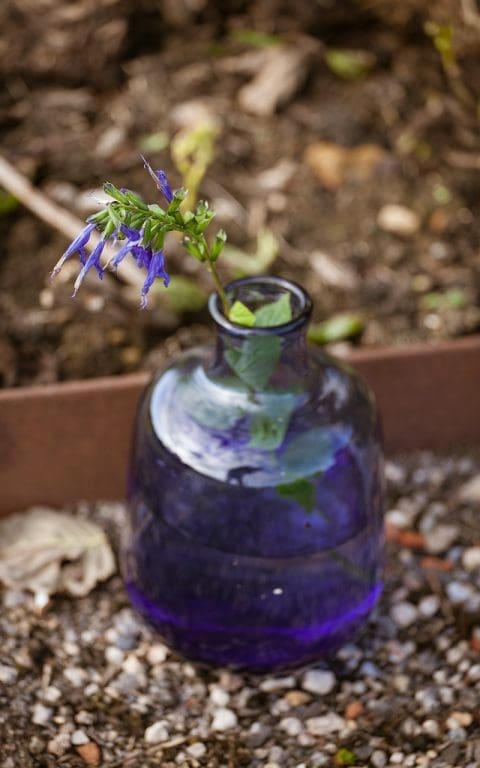
Photographs | Huw Morgan
Published 3 November 2019
Huw Morgan | 15 August 2019
Although I already knew of her by name, reputation and Instagram it was at the 2015 Port Eliot Festival, where we were both judges for the Flower Show, that I first met Flora Starkey. We hit it off instantly, finding that we gravitated towards the same entries in each of the show classes; those where the immediacy, spirit and freedom of the arrangement was more important than technical proficiency, complexity or sophistication.
These are some of the very qualities that set Flora’s work apart and she is rightly feted for her lightness of touch, very particular use of colour and sensitivity to decay and the use of the ephemeral in her arrangements, which have a melancholy beauty and Late Romantic sensibility. Amongst the new generation of floral artists hers is a completely distinctive vision.
I knew immediately that it would be exciting to give Flora the opportunity to come to Hillside and see what she made of our selection of plants and flowers. Although it has taken several years to come to fruition, finally last week Flora came.
After a walk around the garden taking everything in (and impressing me with her plant knowledge) Flora identified the things she most wanted to use. It was wonderful to see her working with such intent focus and speed. The instinctive way in which she both selected plants from the garden and then placed them together in the arrangements was both very down to earth and practical, but also full of the mystery of intuitive artistic expression.
Over a glass of wine after an adrenalin charged afternoon, I asked Flora if she would like to come back to see the garden in another season. ‘Of course !’, she said. And so, schedules allowing, we are planning for Flora to return to make further floral portraits of the garden here in autumn, winter and spring.
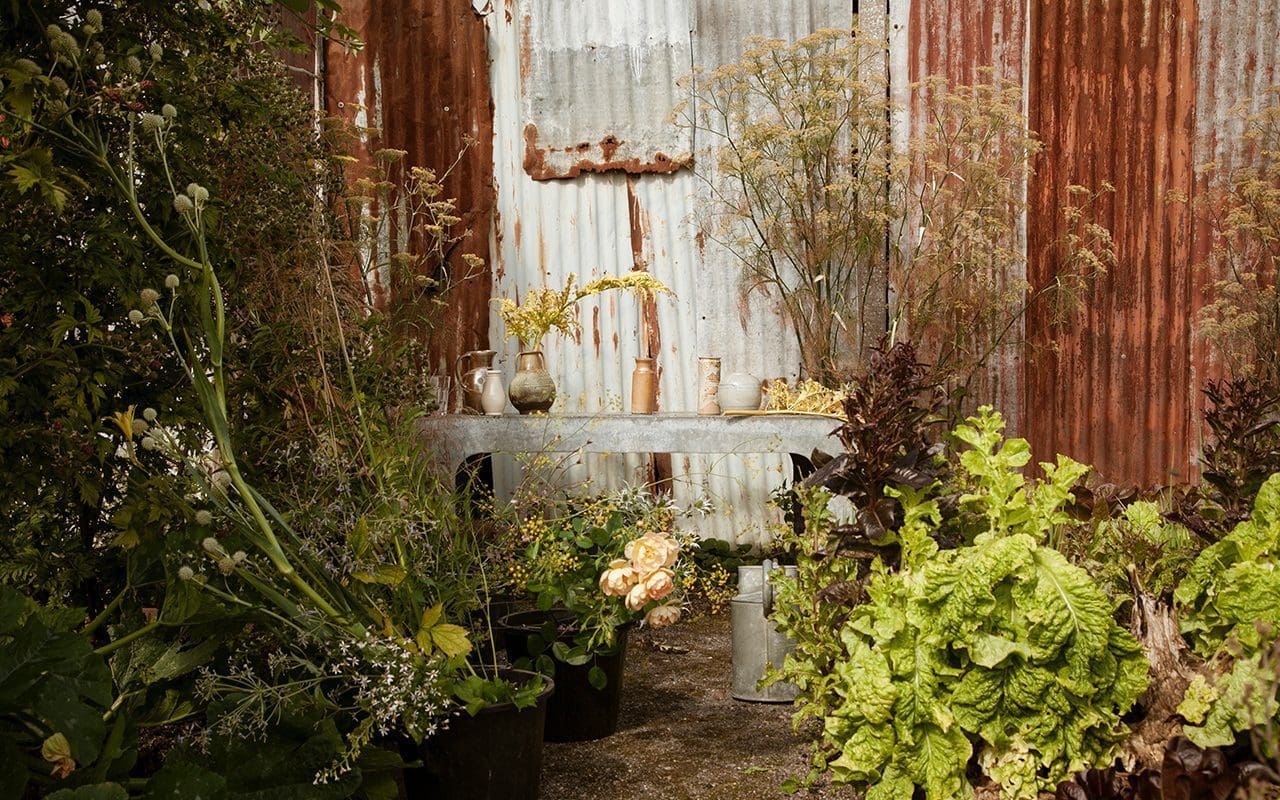
Flora Starkey | 8 August 2019
On arriving at Hillside, it is immediately apparent how the land holds the house & outbuildings central amongst the different areas of garden, the fields and valley beyond. Sitting outside, while Huw made a pot of tea, I had a strong sense of the patchwork of history of the place and the different stories that have been woven there over time. There is magic in somewhere so loved.
We chose the location for the shots outside one of the original barns surrounded by the kitchen garden – a place of old & new. For me, the space is always the starting point of any arrangement and the corrugated metal backdrop with its patches of rust led to Huw’s collection of stoneware vases.
Then to the garden. I wanted to create an arrangement from this setting while impacting on it as little as possible, so we cut sparingly – one or two stems from each plant – some of which had already been blown over in the wind. I chose what I felt captured the feel of this time of year, high summer with autumnal undertones. I’m always drawn to the changing colour of the leaves as they move through the seasons, the most beautiful stems in my opinion are the ones in transition or decline.
I felt there were two stories in the flowers at Hillside in early August: firstly the creams and buttery yellows with the odd splash of blue & lavender, and then the drama and heat of the reds, dark purples and browns. So we decided on two arrangements. I wanted to show the flowers for what they are: wild and changing, not too ‘arranged’, and of their place. Using a collection of mixed sized vases to make one piece is a way that I often like to work as it allows for a fairly large arrangement whilst giving more space in between the stems.
The molopospermum led the first with its sculptural leaves of bright yellow turning rust brown, and then a tall stem of Achillea chrysocoma ‘Grandiflora’, dried and curled at the top. Further down the stem, the leaves became a rainbow mix of pale green fused with yellow and wine red.
Evening primrose, fennel, actaea and Bupleurum longifolium ‘Bronze Beauty’ followed to give height and structure and all in different stages between flower & seed. This is where I find the true beauty, in the changes through which every plant evolves. Then a single stem of Rose ‘The Lark Ascending’, to add a touch of glamour, quickly offset with some bone coloured poppy heads. A hemerocallis lily was softened by some chasmanthium and two varieties of Calamintha in cream and lavender to visually draw the stems together. Finally some echinops and a sprig of Eryngium giganteum snipped from under the table to finish.
The second arrangement featured pops of bright red in the dahlias, crocosmia and geranium against a tangled backdrop of daucus, verbena, sanguisorba, persicaria and asters with a single arching stem of dierama in seed swinging above. Again, it was the mottled & turning leaves of the Nepeta ‘Blue Dragon’ with its dried flower heads that brought the most joy.
This really must be the most satisfying kind of creativity: working with flowers in your direct locality & the opportunity to use so-called imperfect stems, the beauty in which is so often strangely overlooked.
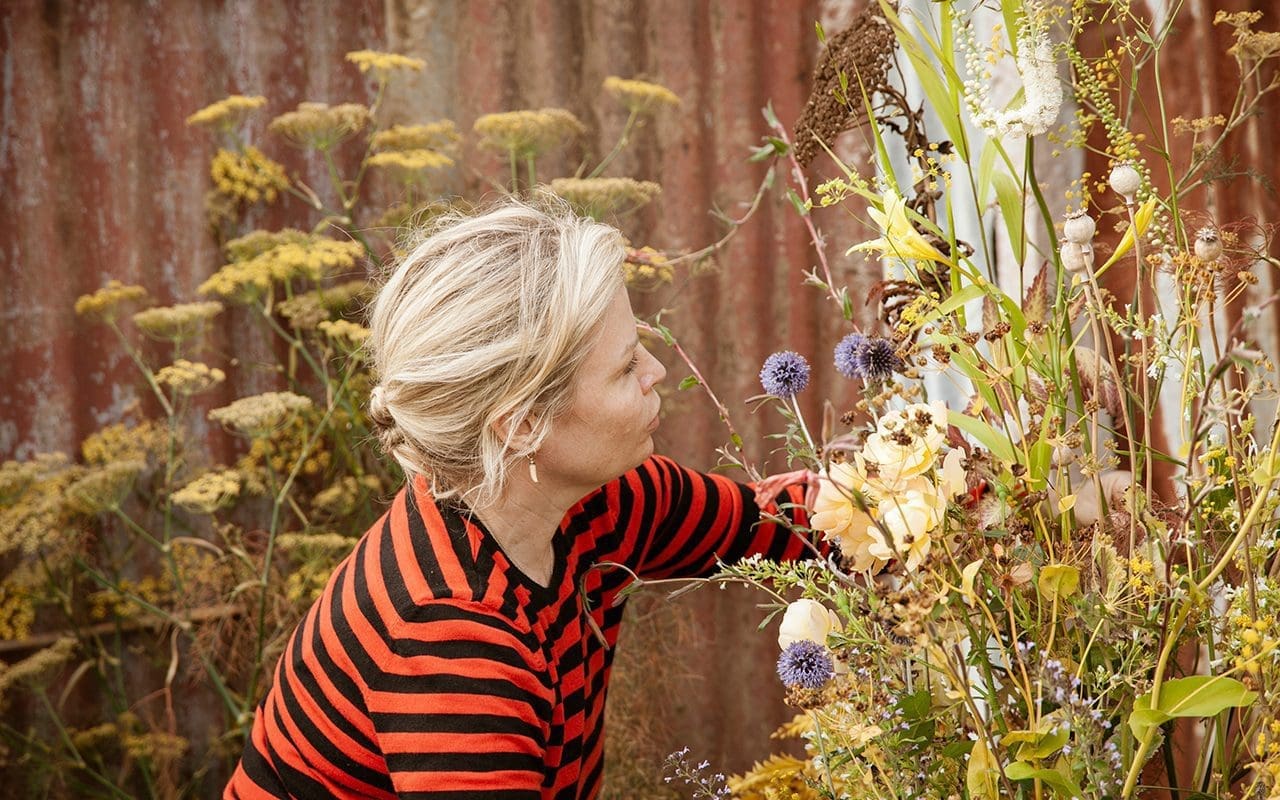
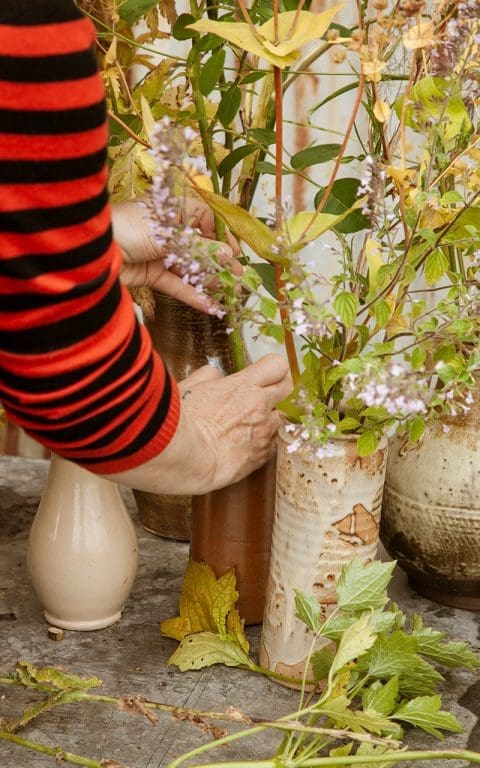
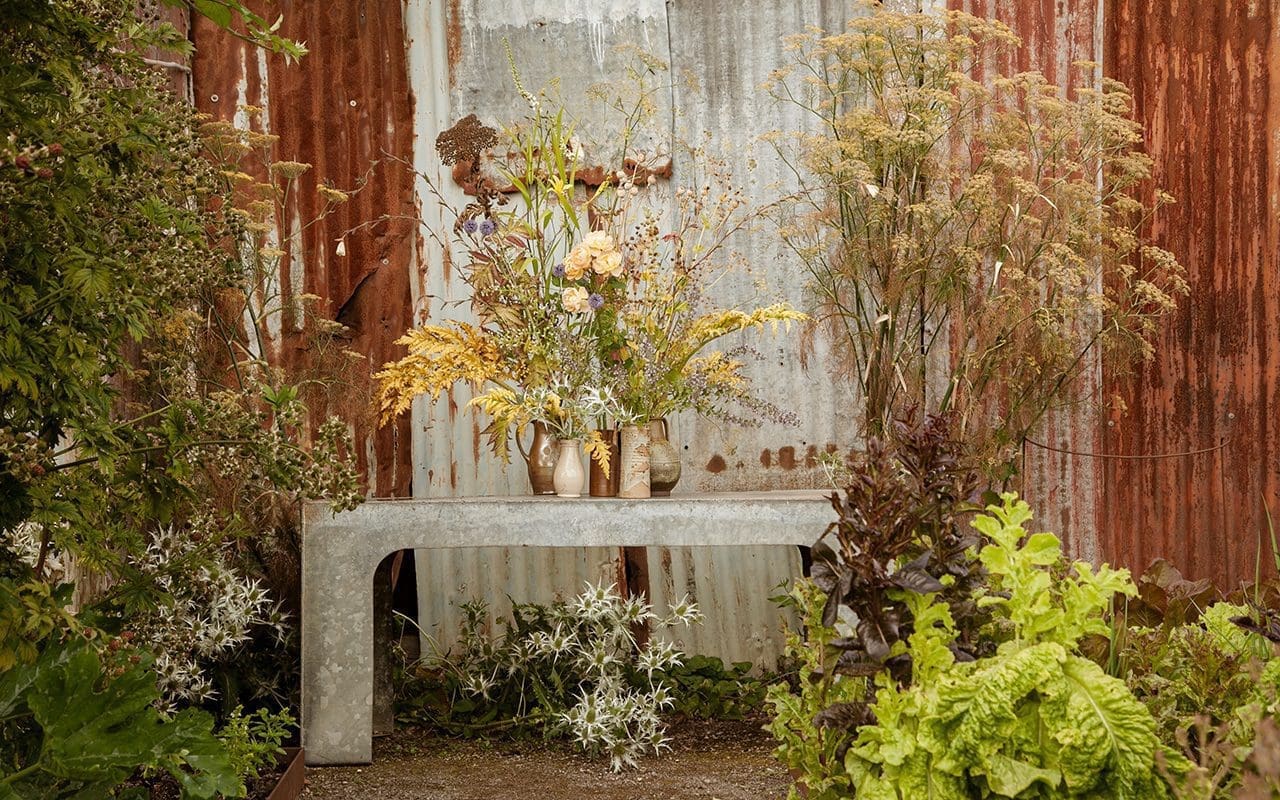
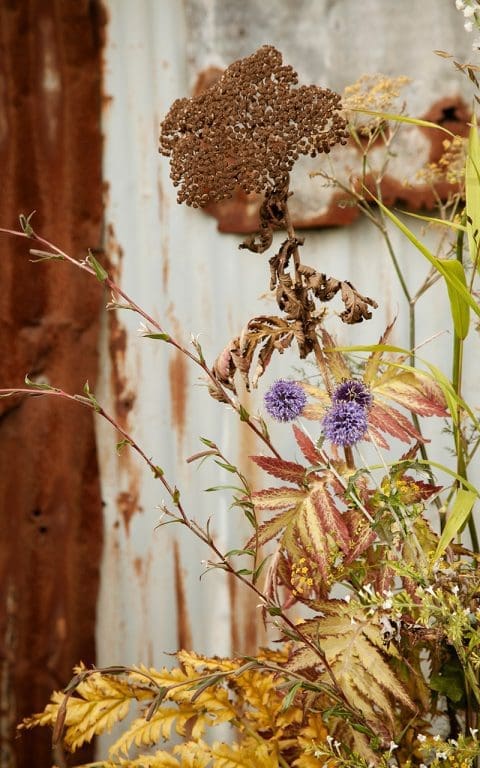
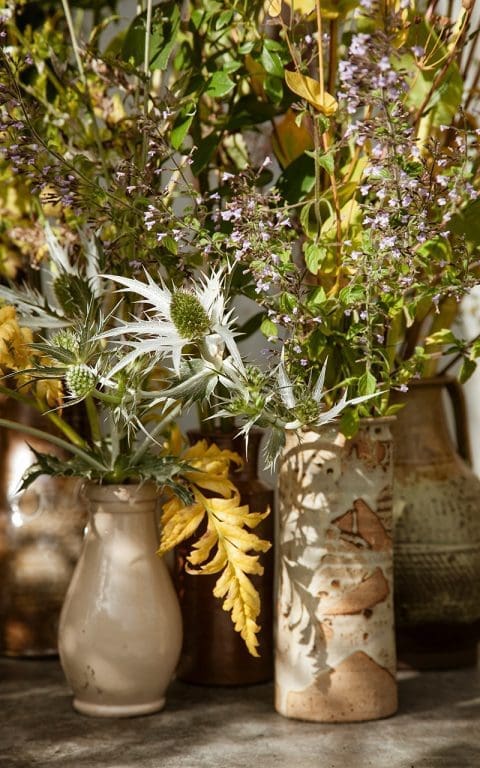
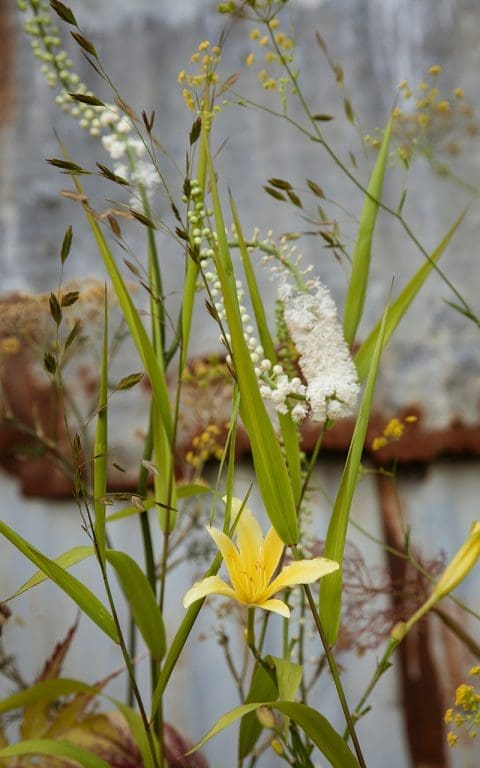
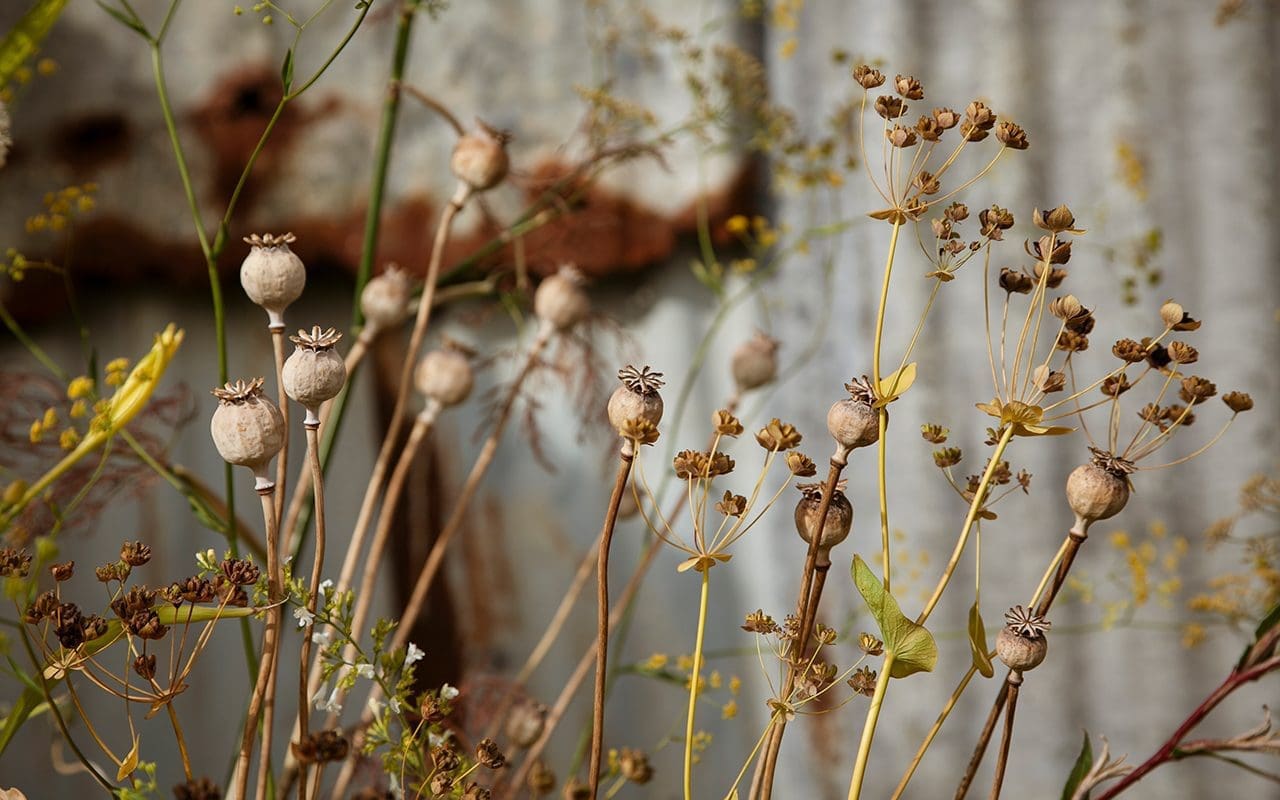
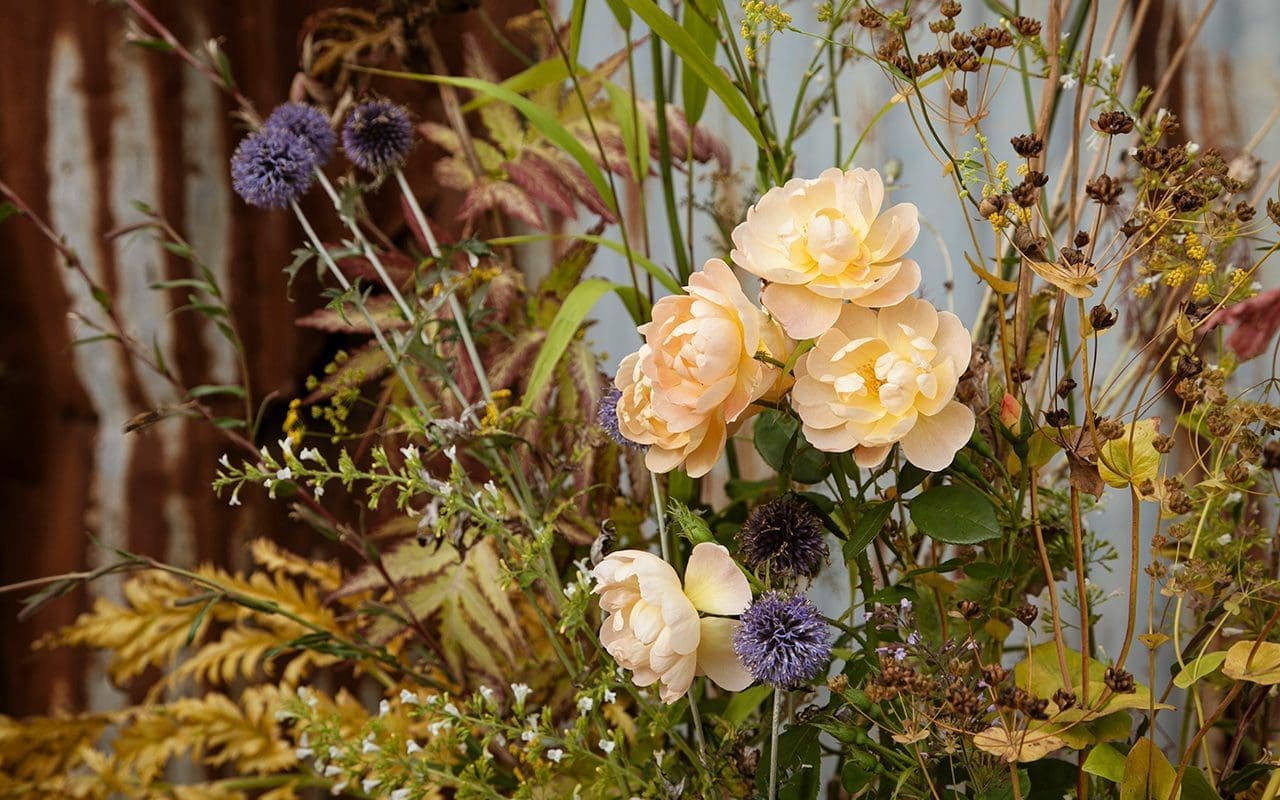
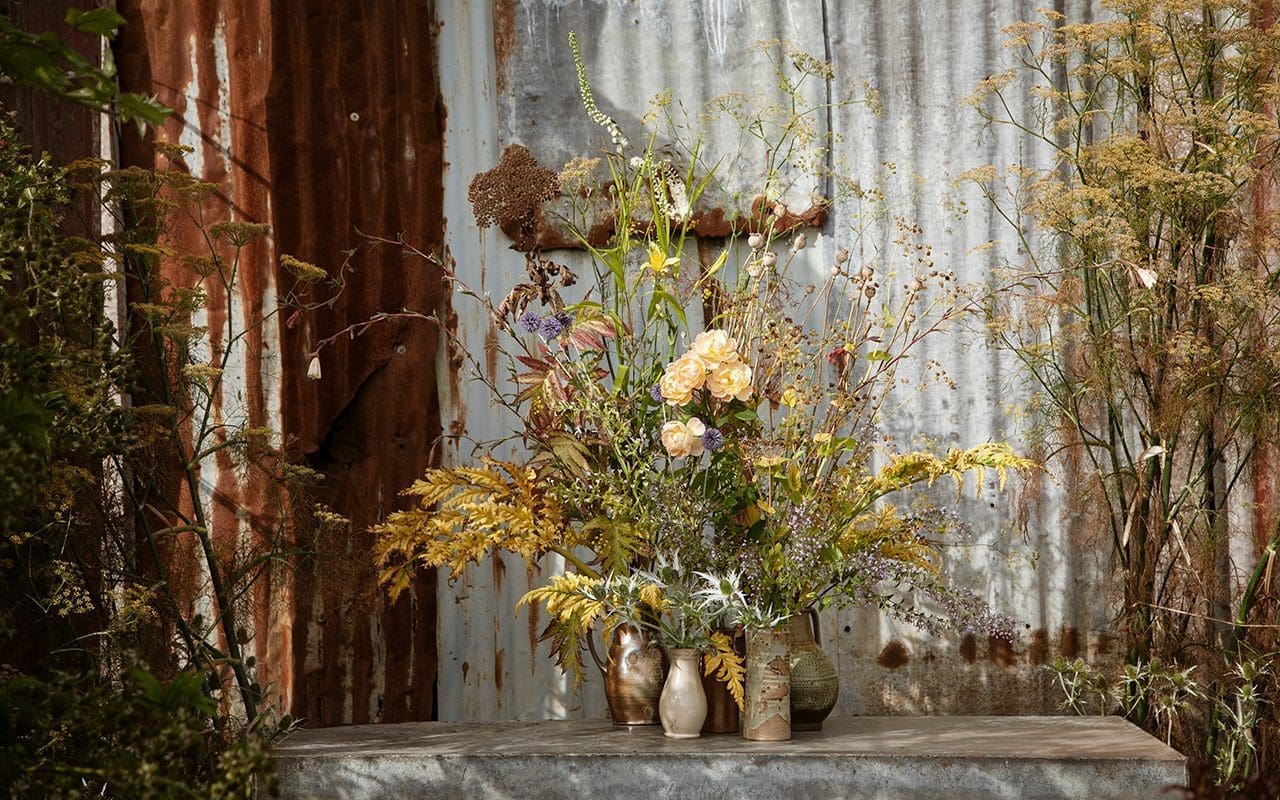
Achillea chrysocoma ‘Grandiflora’
Actaea racemosa
Bupleurum falcatum
Bupleurum longifolium ‘Bronze Beauty’
Calamintha nepeta ssp. nepeta ‘Blue Cloud’
Calamintha sylvatica ‘Menthe’
Chasmanthium latifolium
Echinops bannaticus ‘Veitch’s Blue’
Eryngium giganteum
Foeniculum vulgare ‘Purpureum’
Hemerocallis citrina x ochroleuca
Molopospermum peloponnesiacum
Oenothera stricta ‘Sulphurea’
Papaver somniferum ‘Single Black’
Rosa ‘The Lark Ascending’
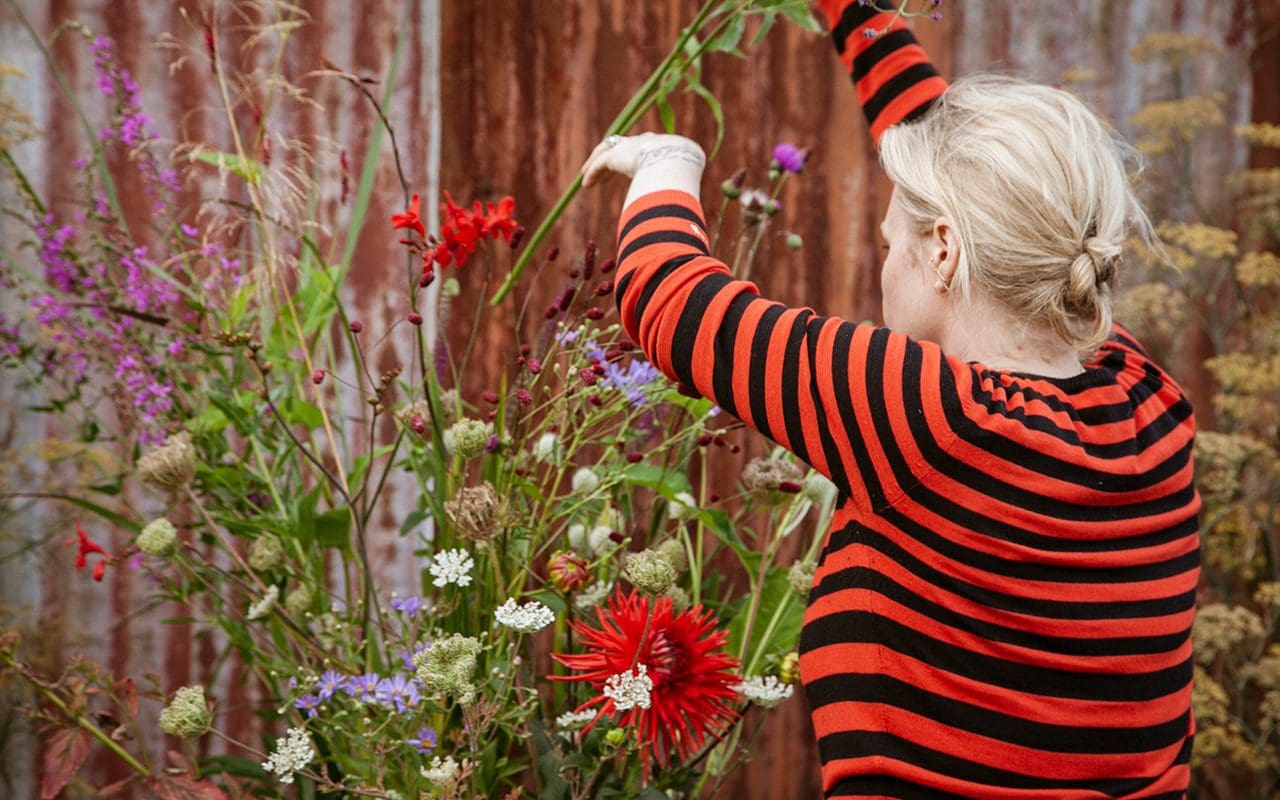
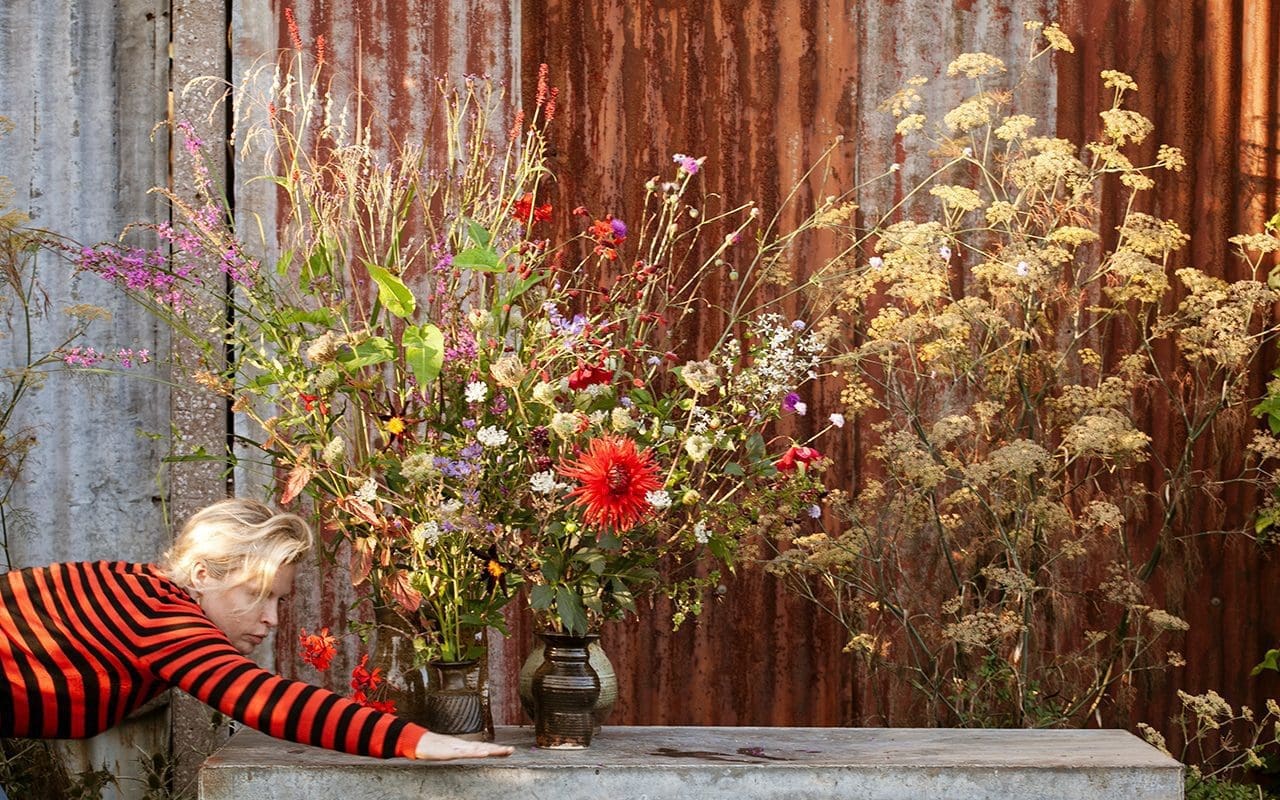
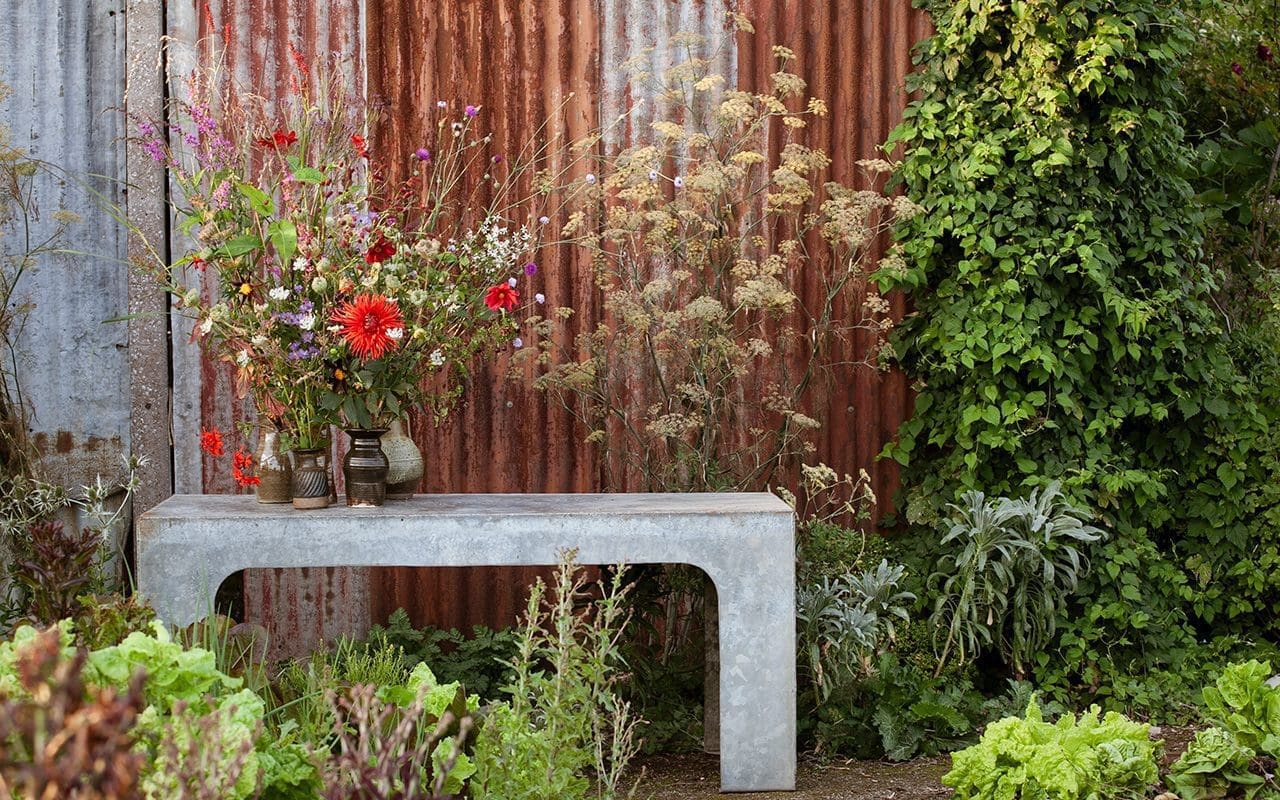
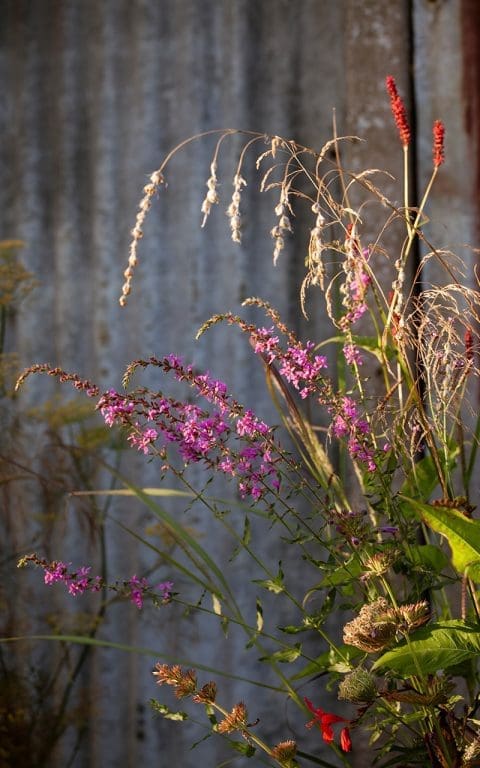
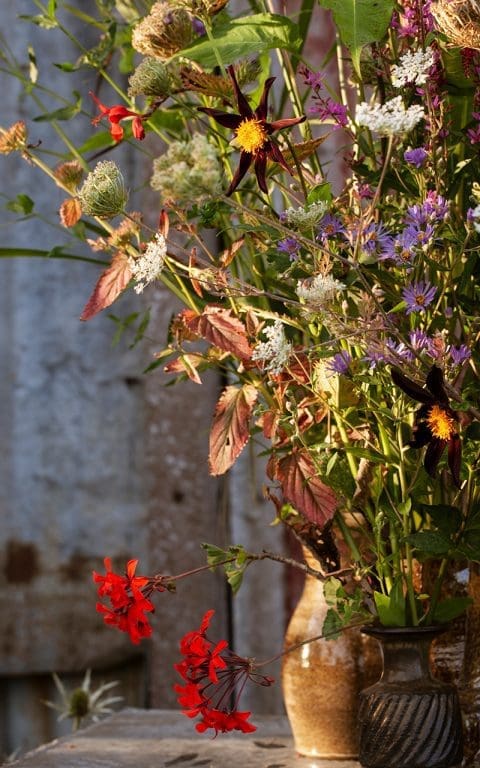
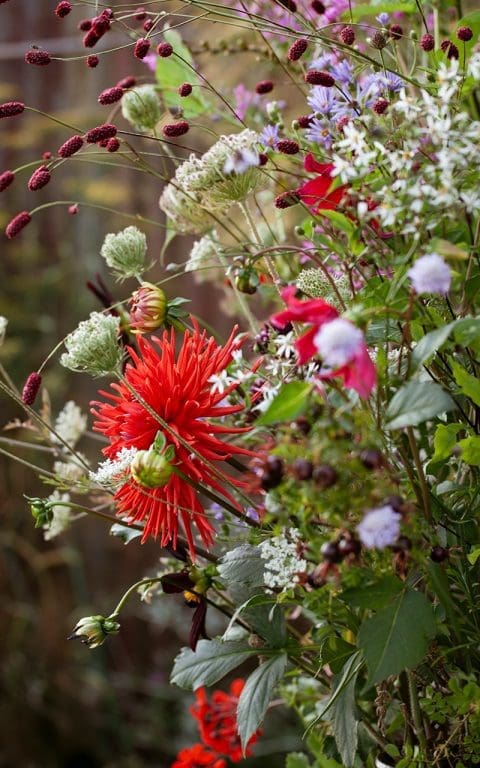

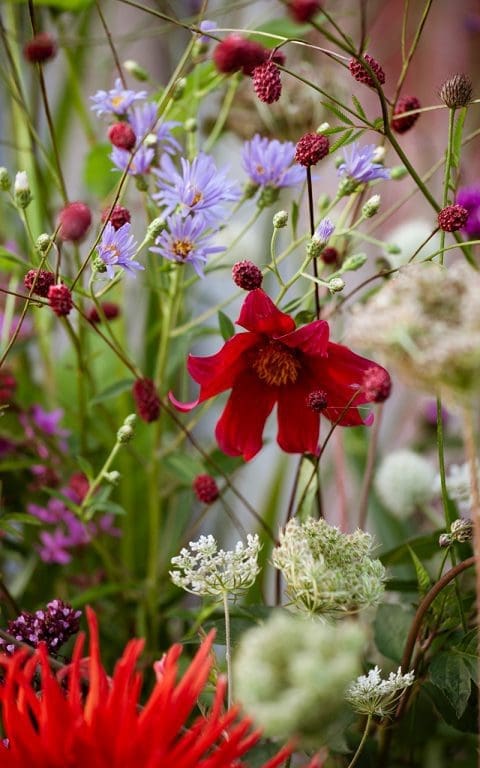
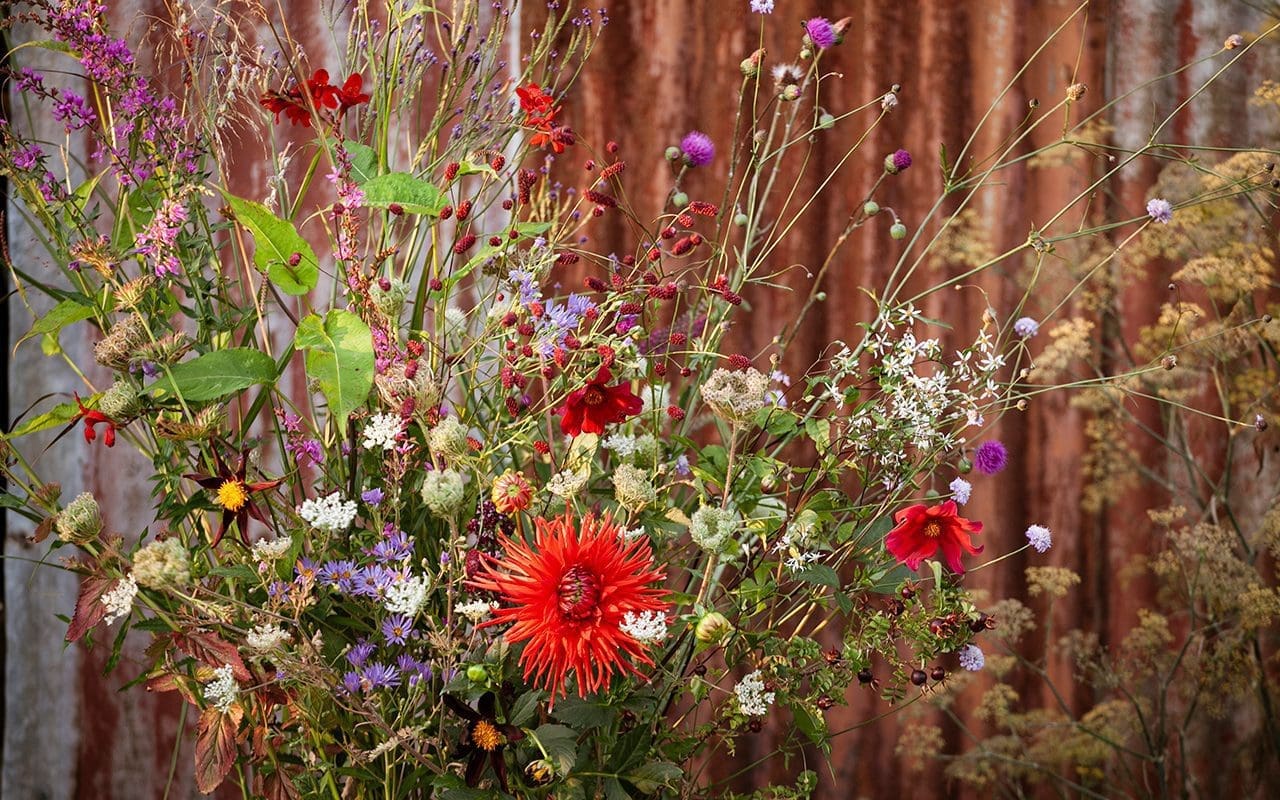
Cephalaria transylvanica
Cirsium canum
Crocosmia ‘Hellfire’
Dahlia ‘Verrone’s Obsidian’
Dahlia coccinea ‘Dixter Strain’
Dahlia species (‘Talfourd Red’)
Daucus carota
Deschampsia cespitosa ‘Schottland’
Dierama pulcherrimum ‘Blackbird’
Eurybia divaricata ‘Beth’
Eurybia x herveyi
Lythrum virgatum ‘Dropmore Purple’
Nepeta ‘Blue Dragon’
Origanum laevigatum ‘Herrenhausen’
Pelargonium ‘Stadt Bern’
Persicaria amplexicaulis ‘Blackfield’
Rosa spinosissima
Sanguisorba officinalis ‘Red Thunder’
Verbena macdougalii ‘Lavender Spires’
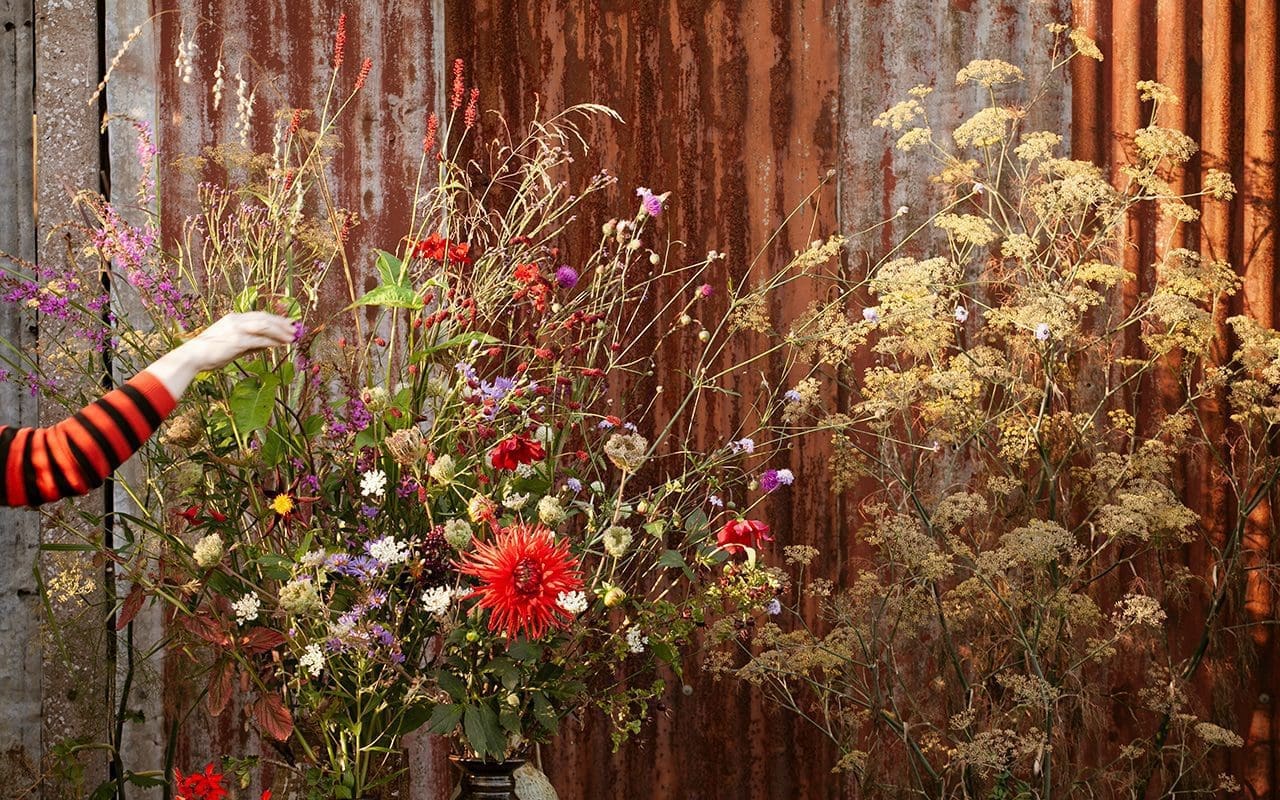
Photographs | Huw Morgan
Published 17 August 2019
We are sorry but the page you are looking for does not exist. You could return to the homepage